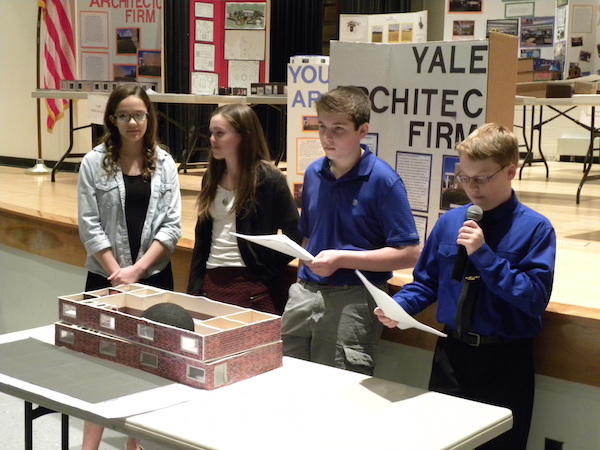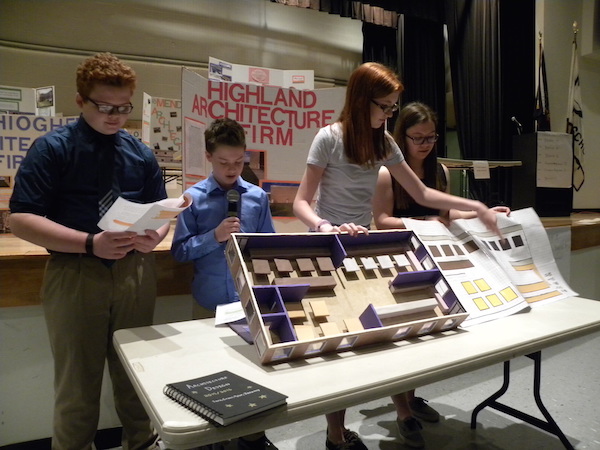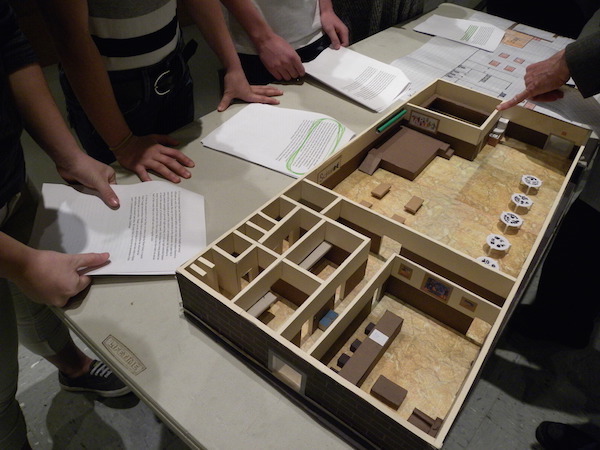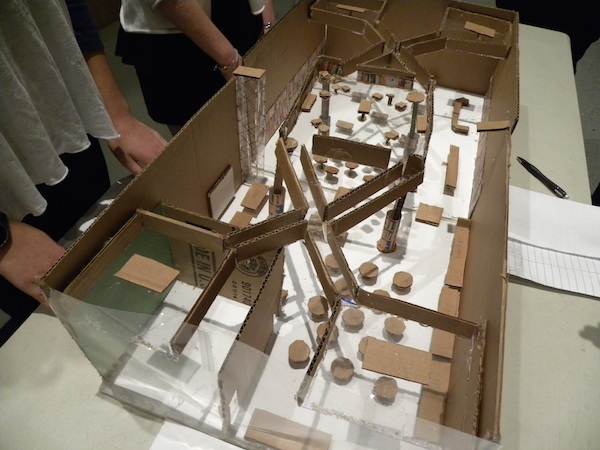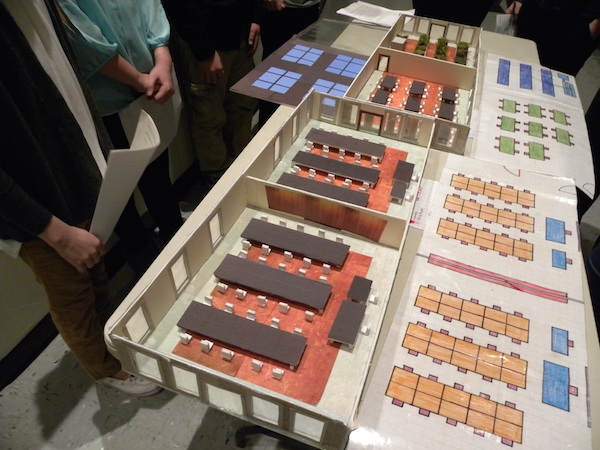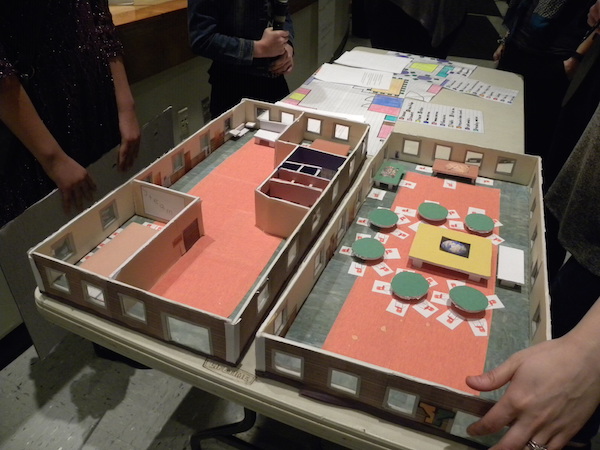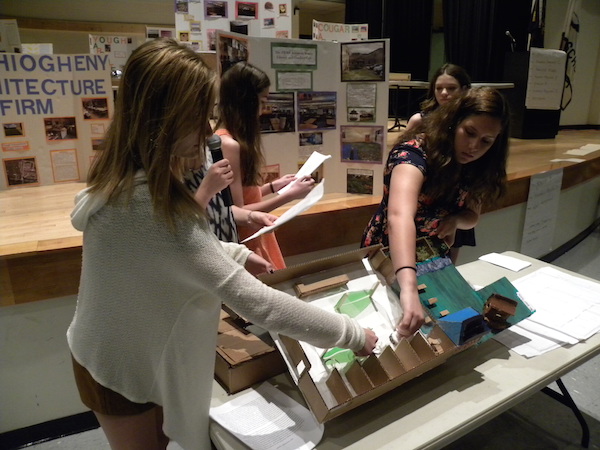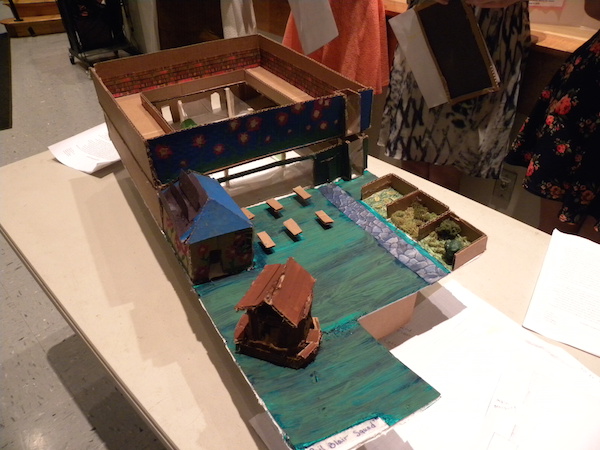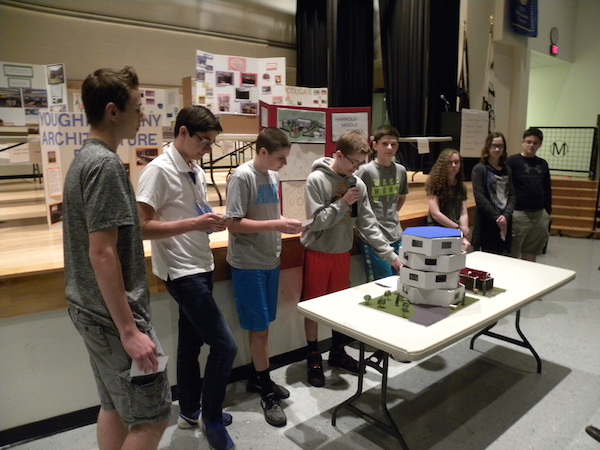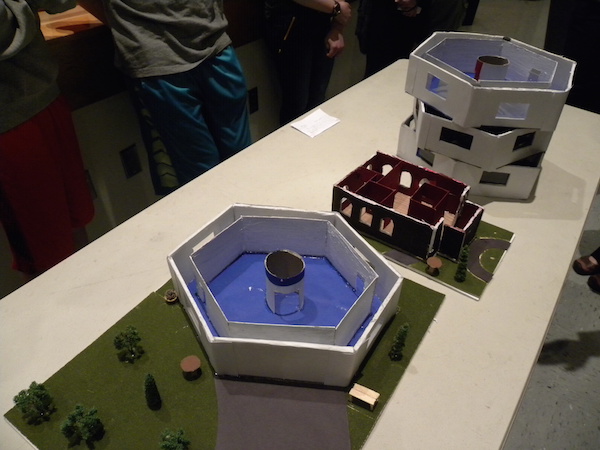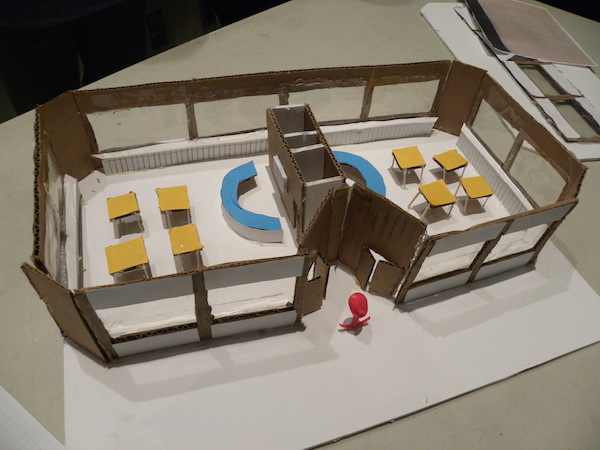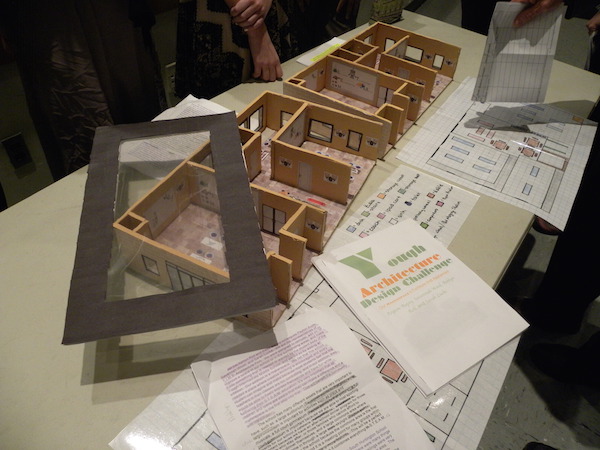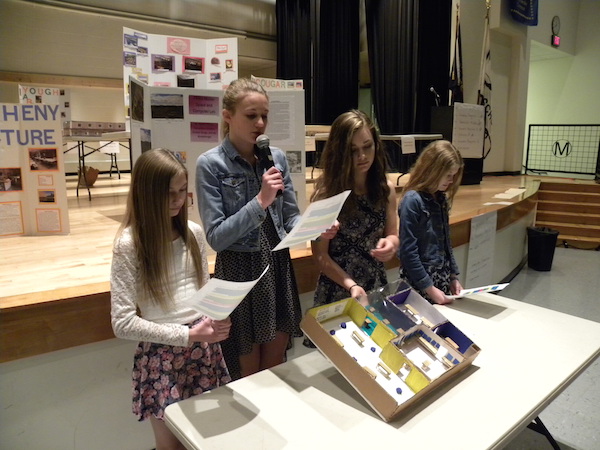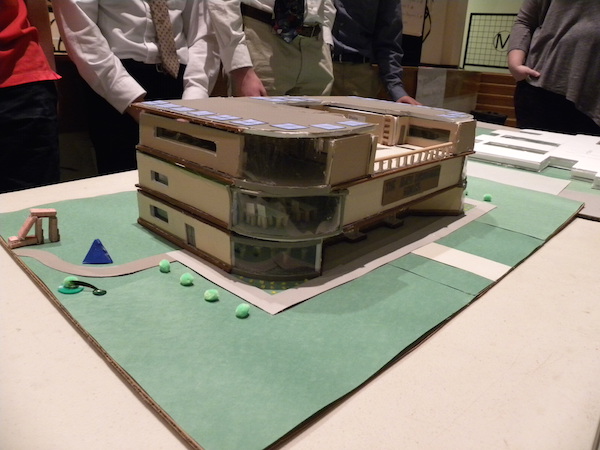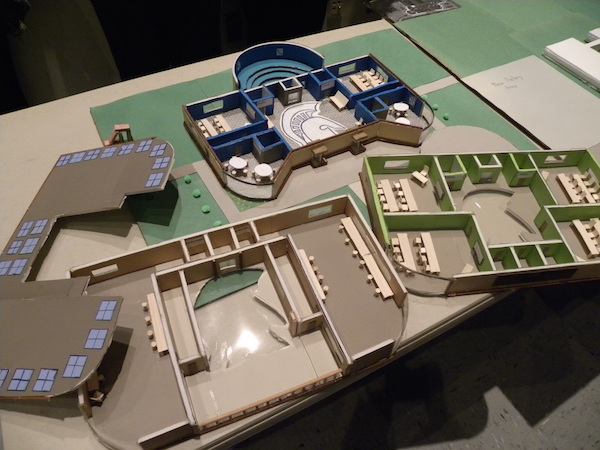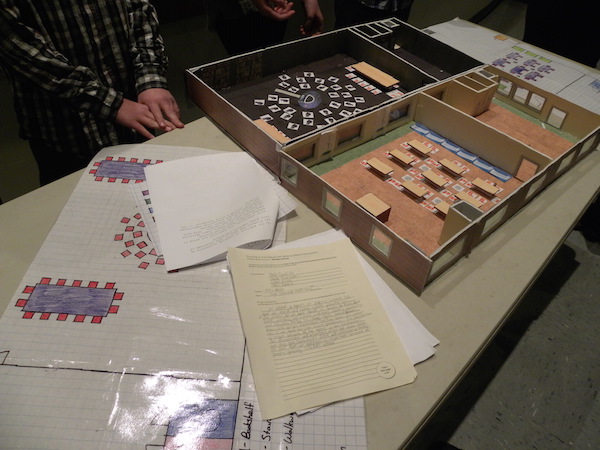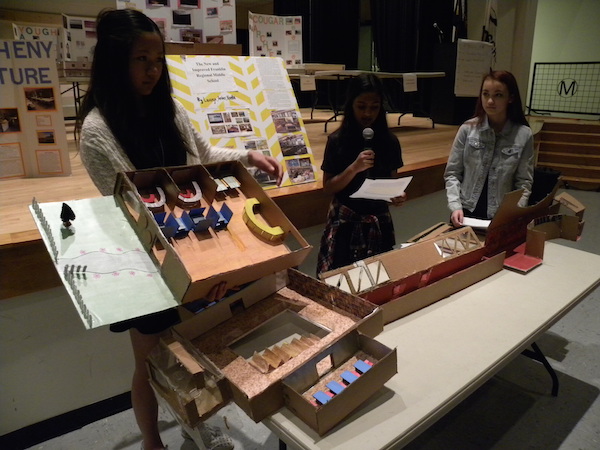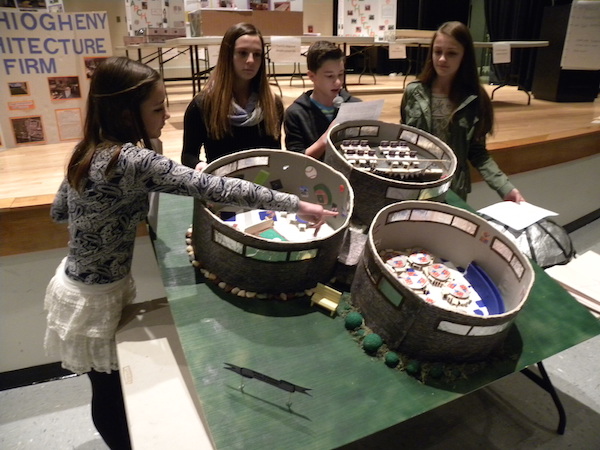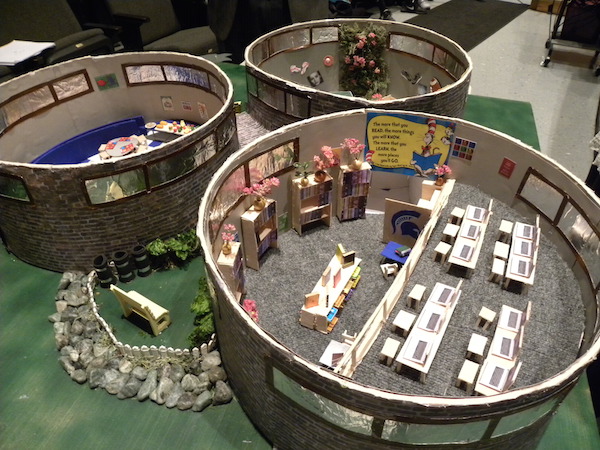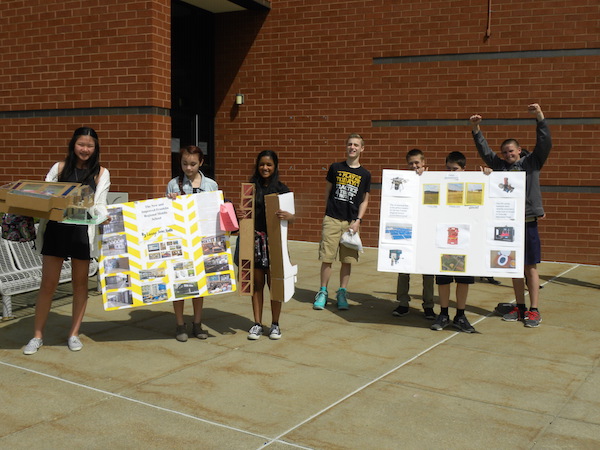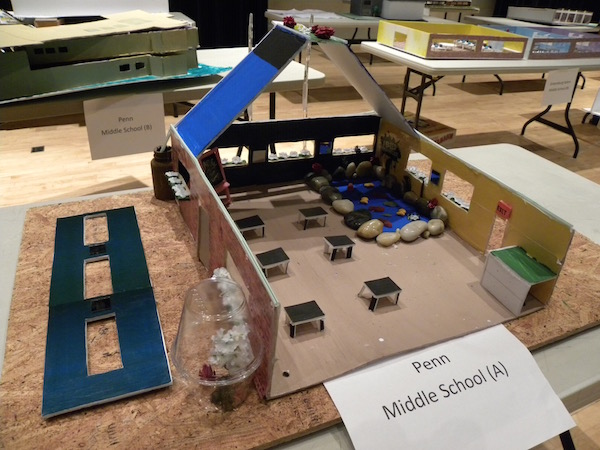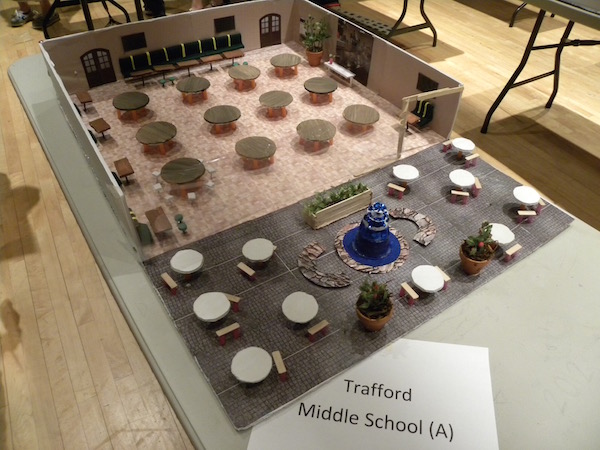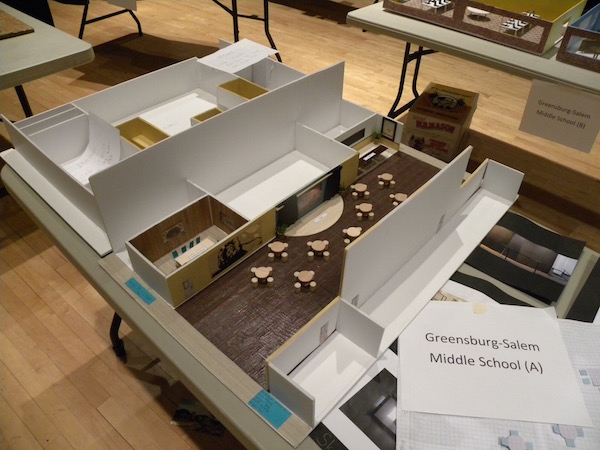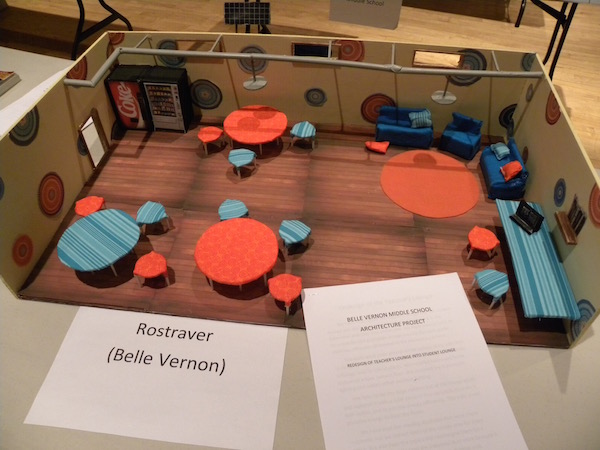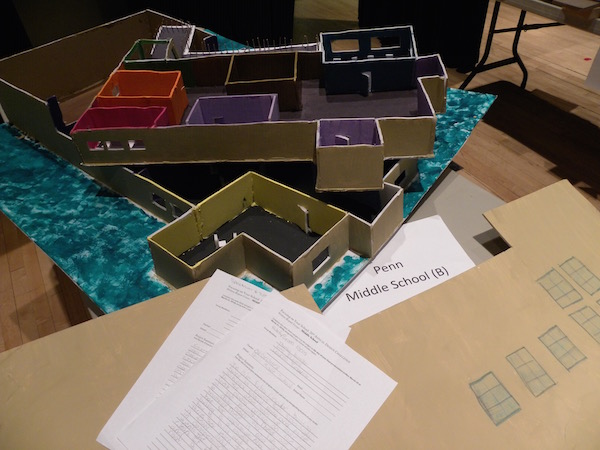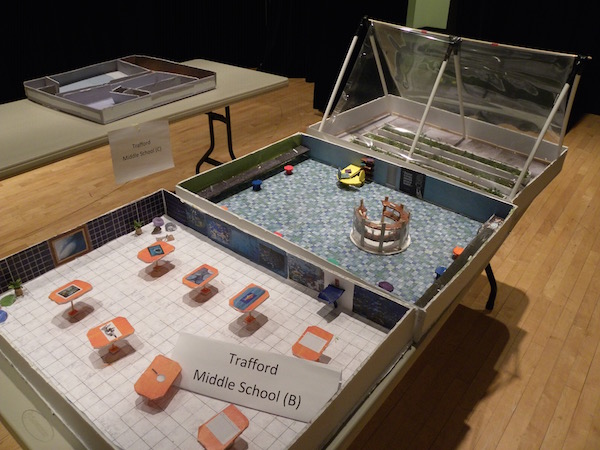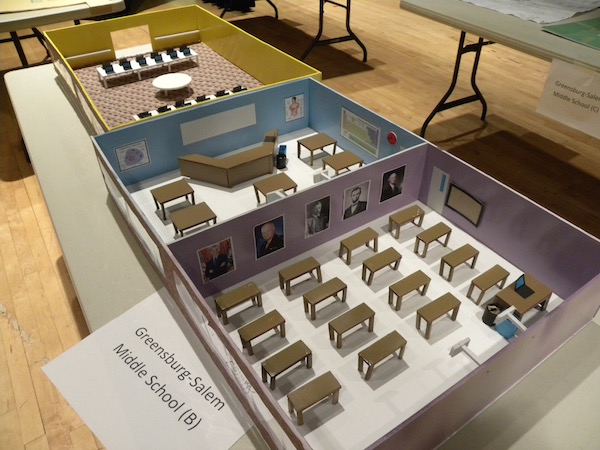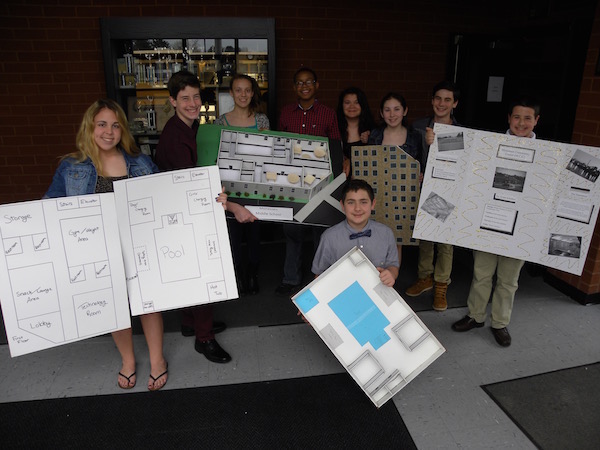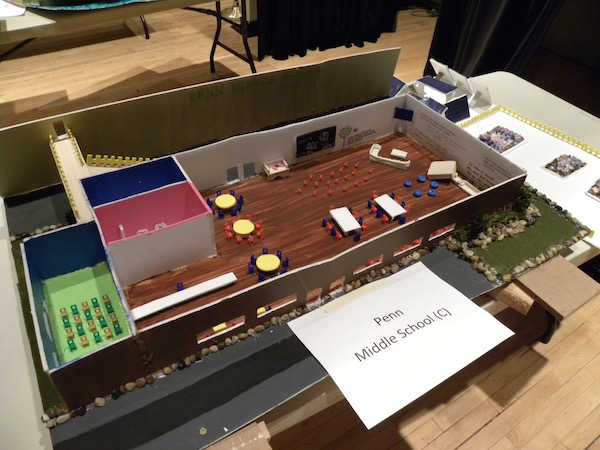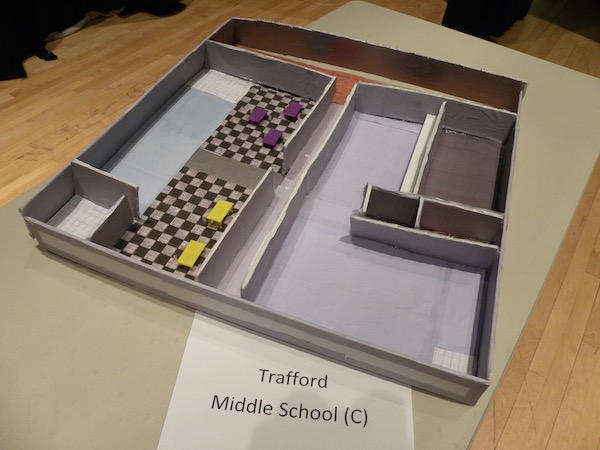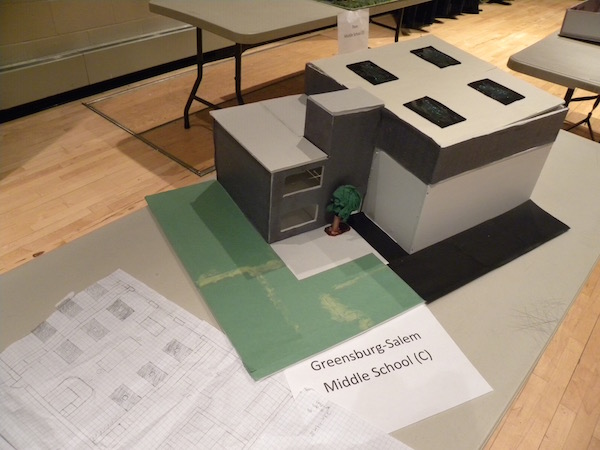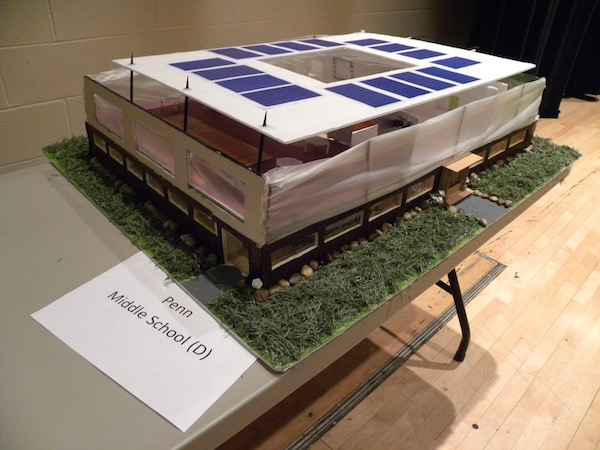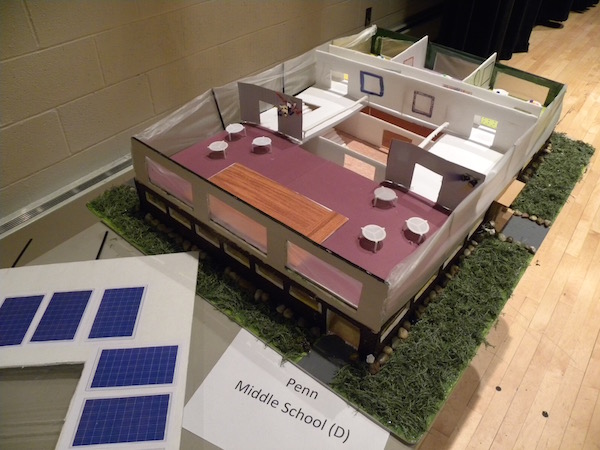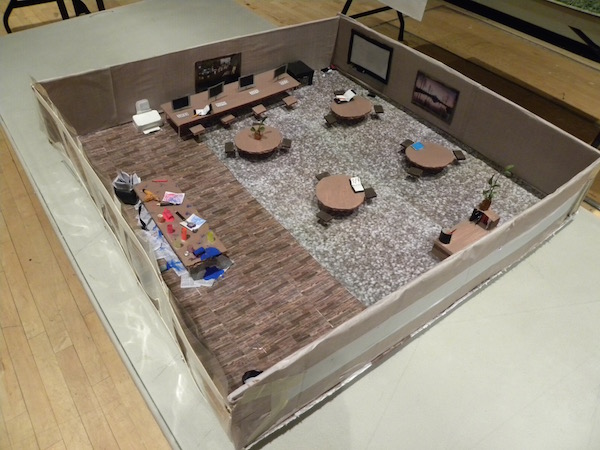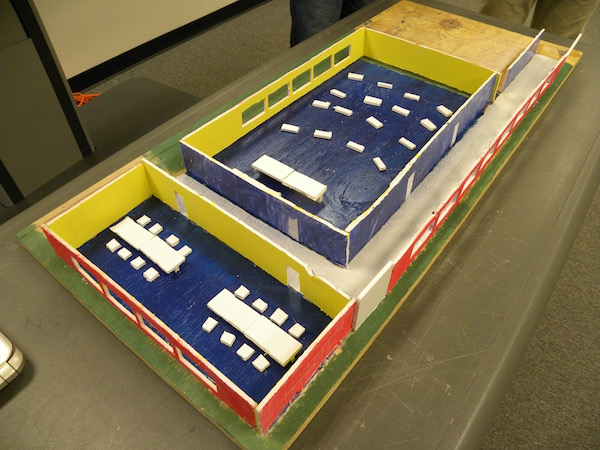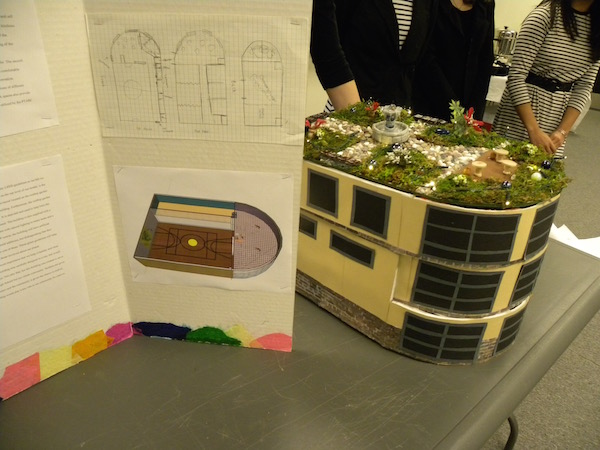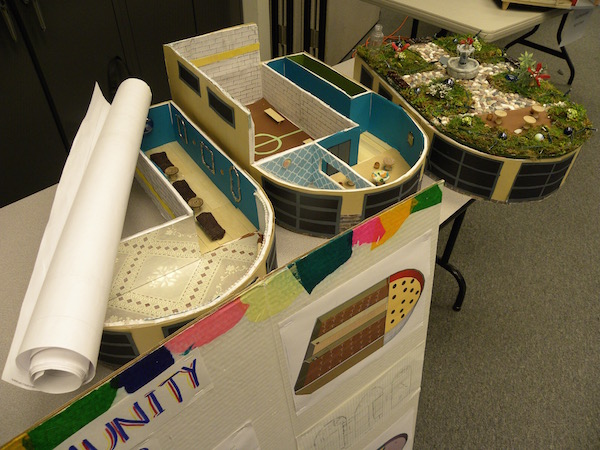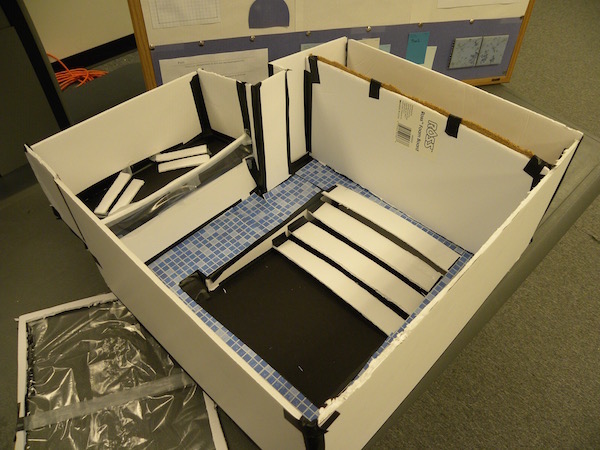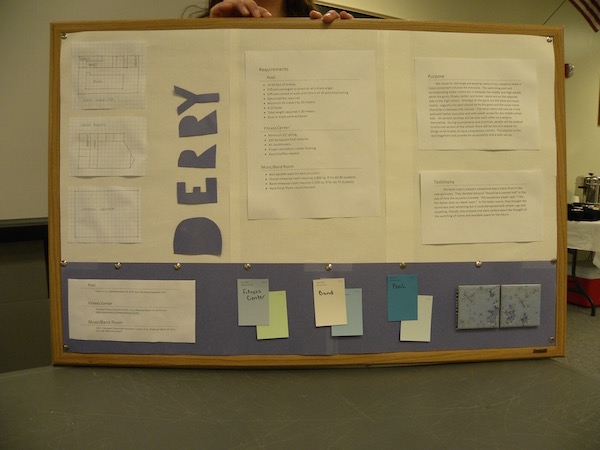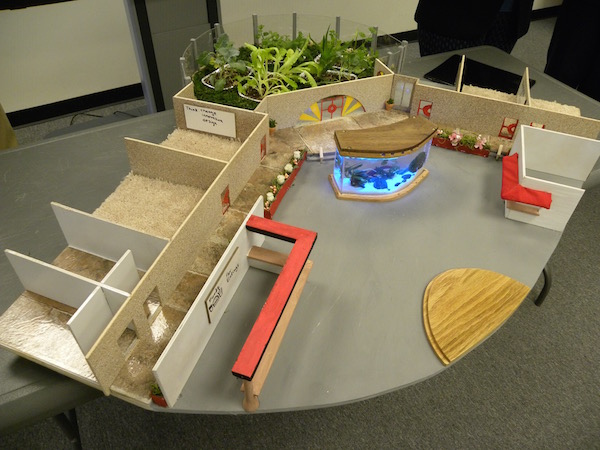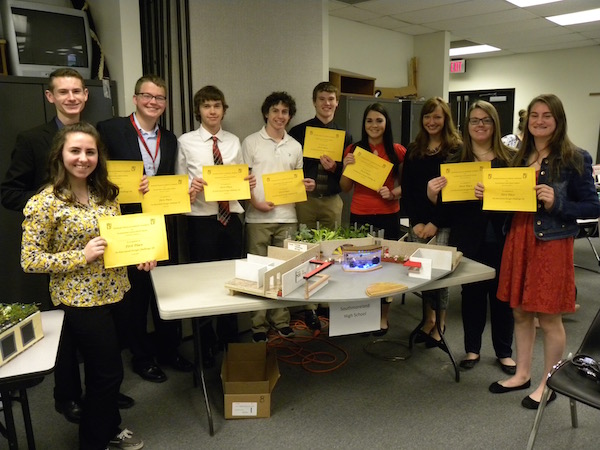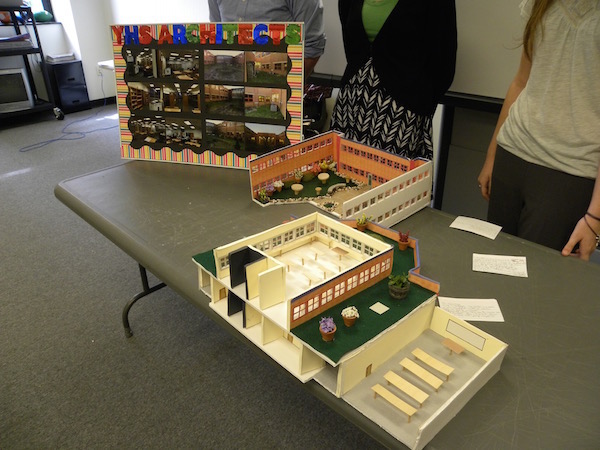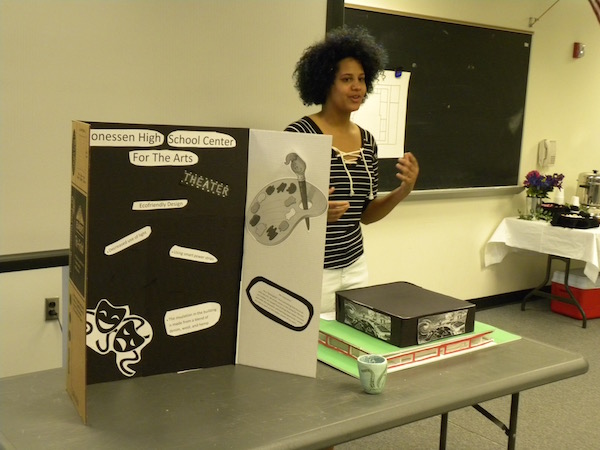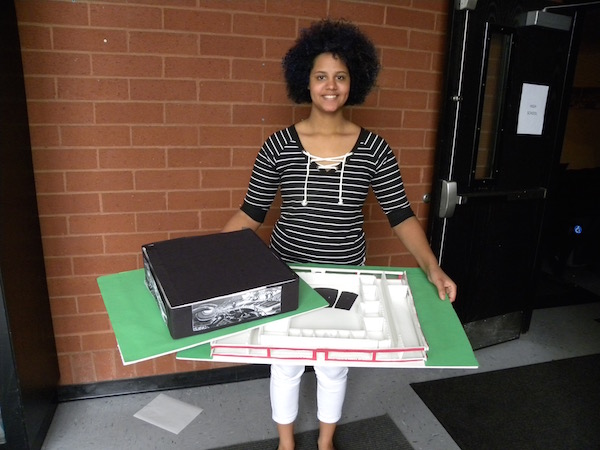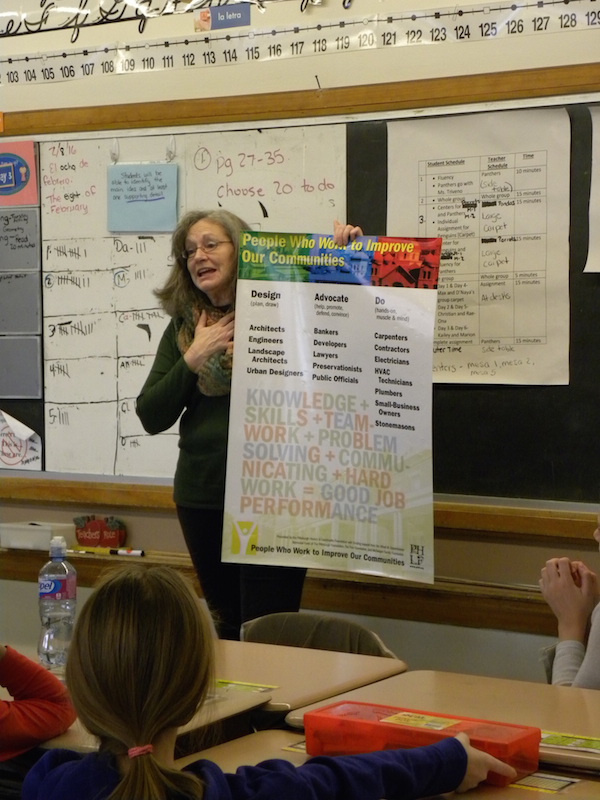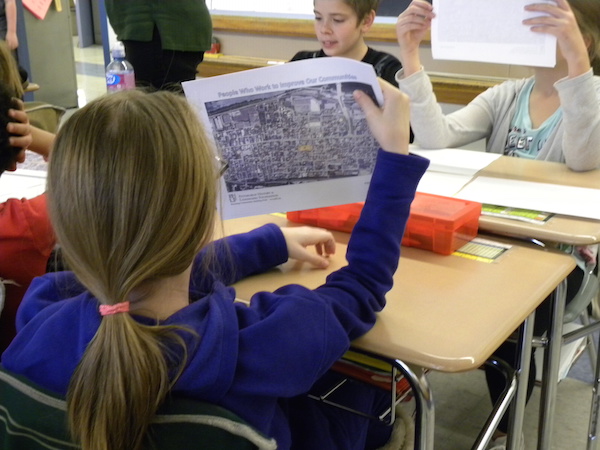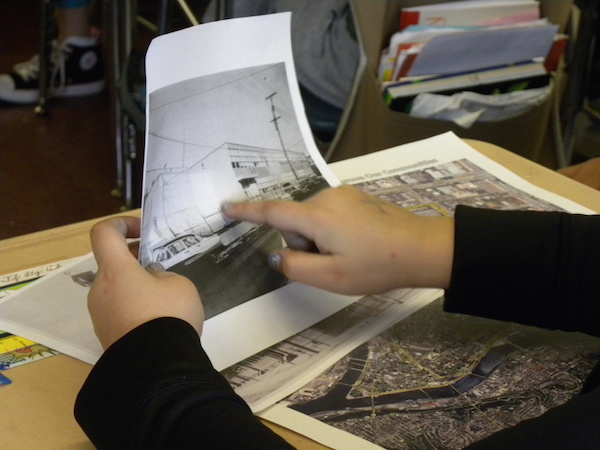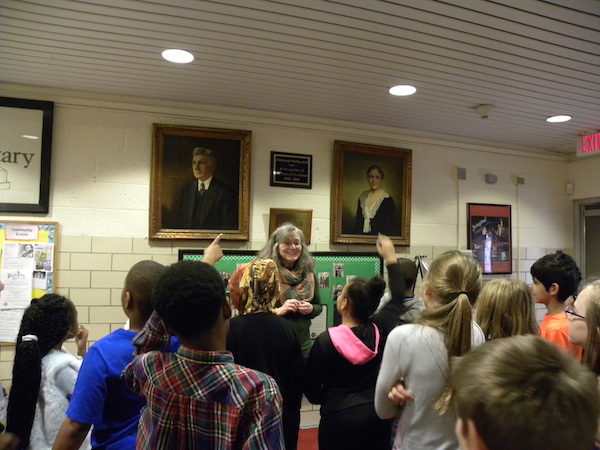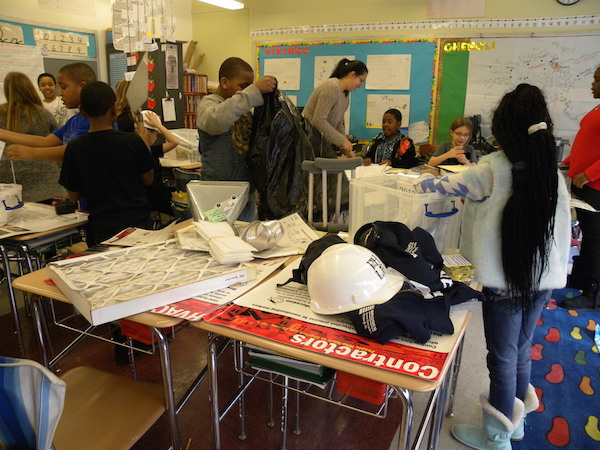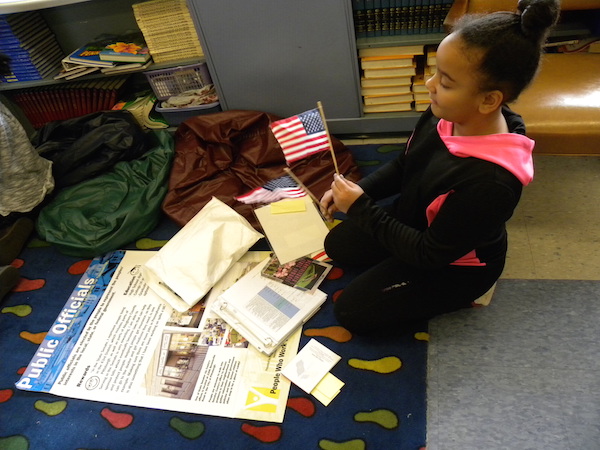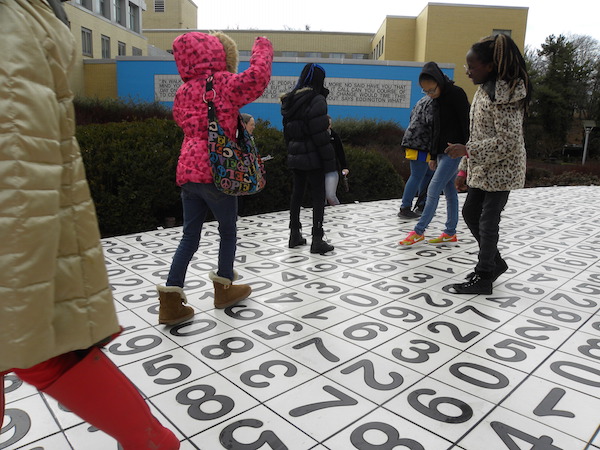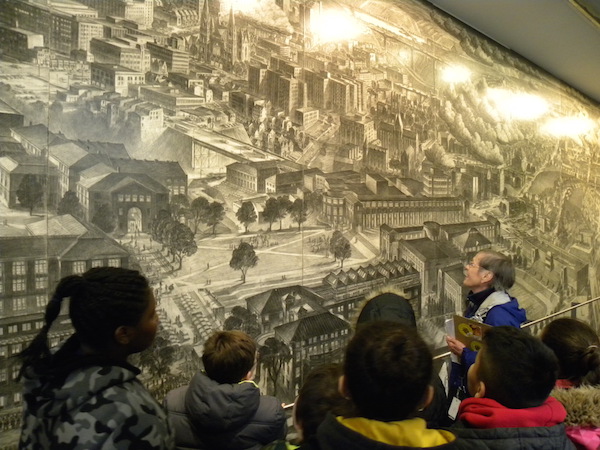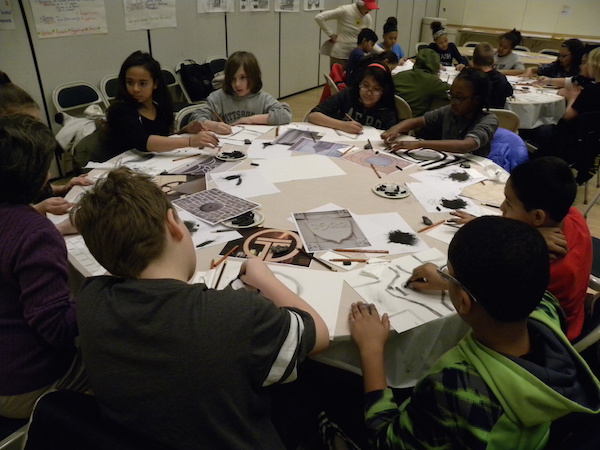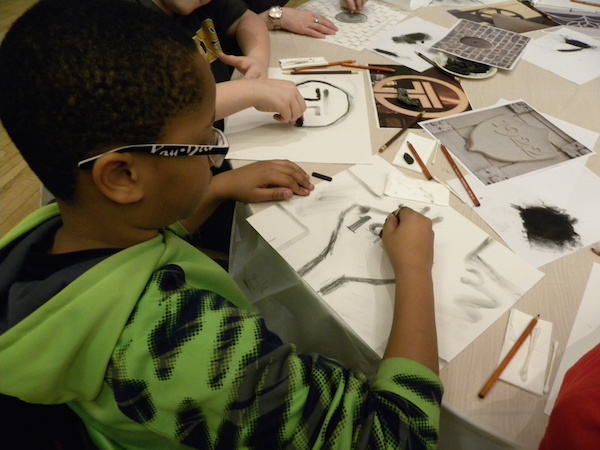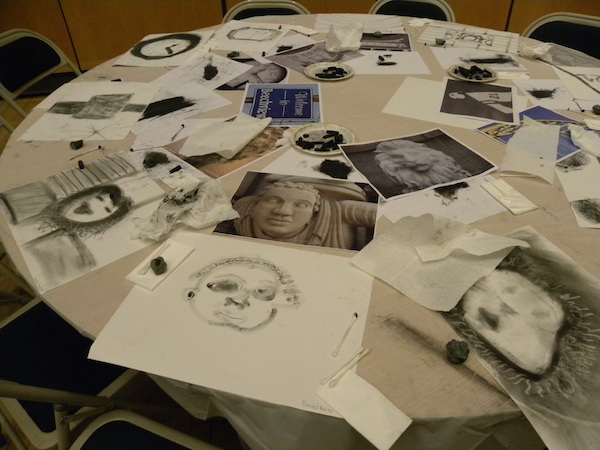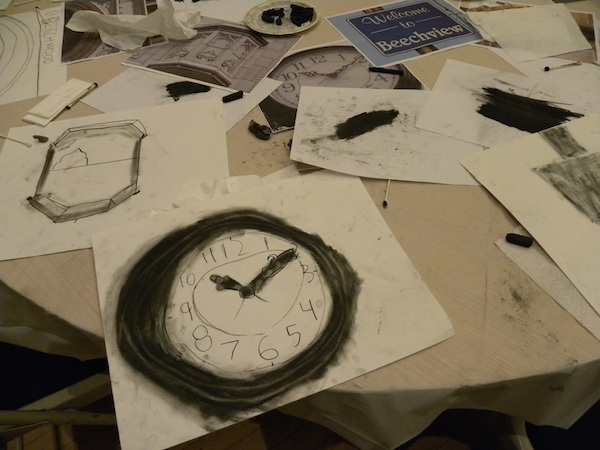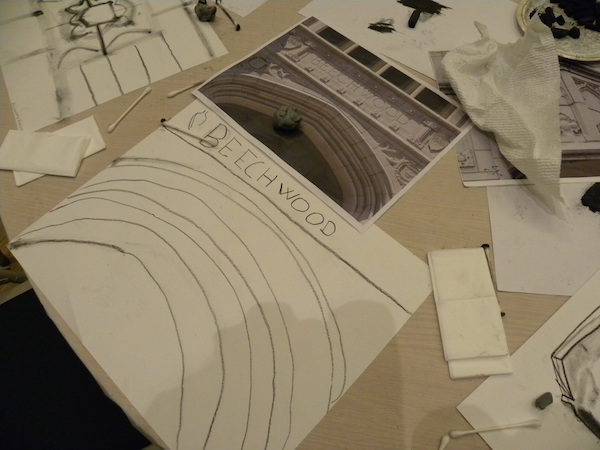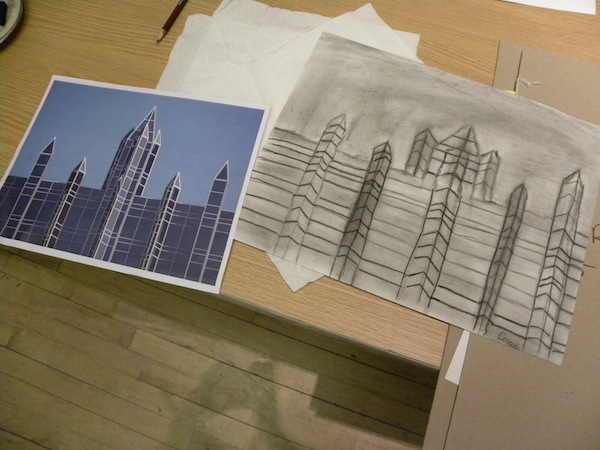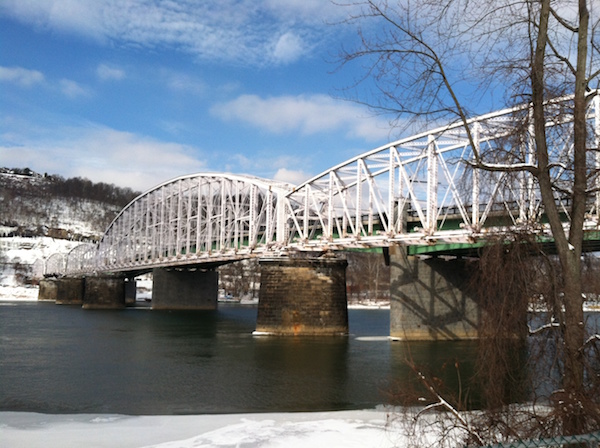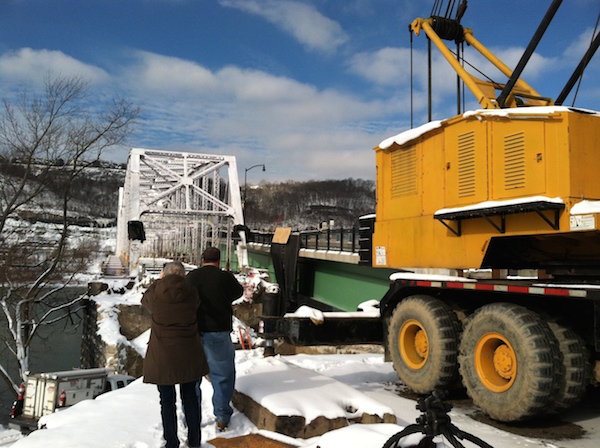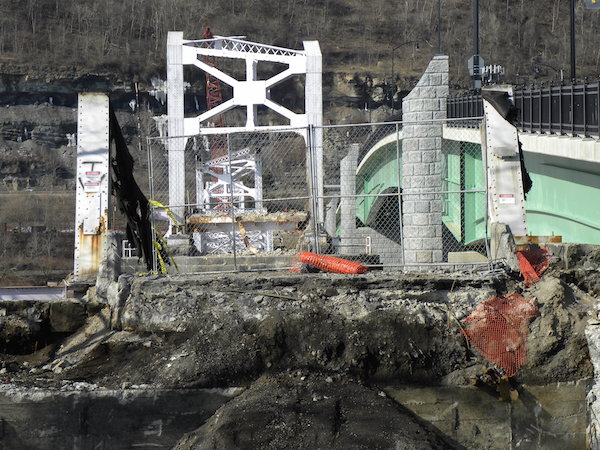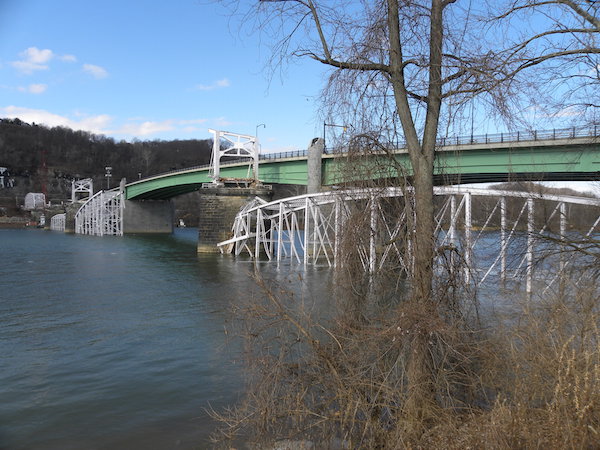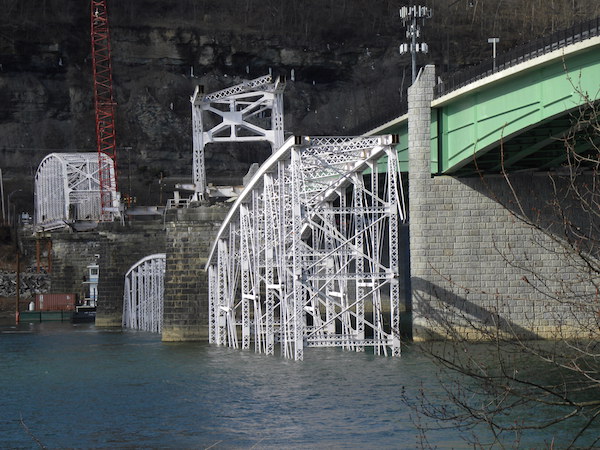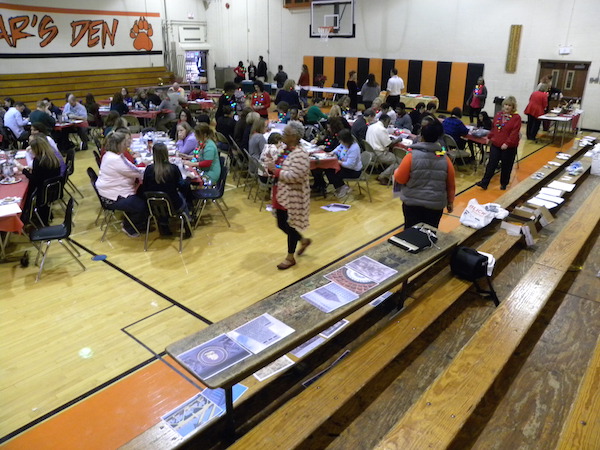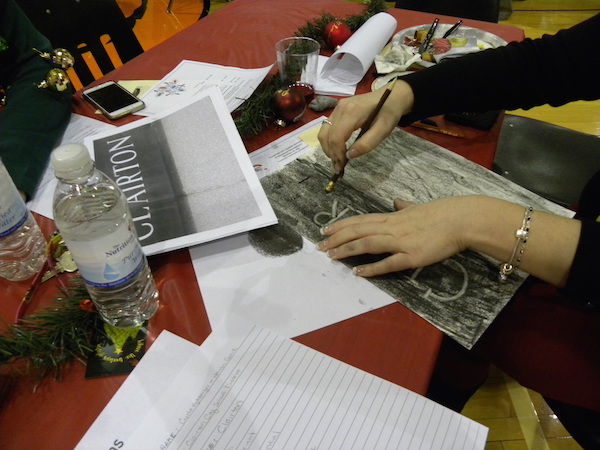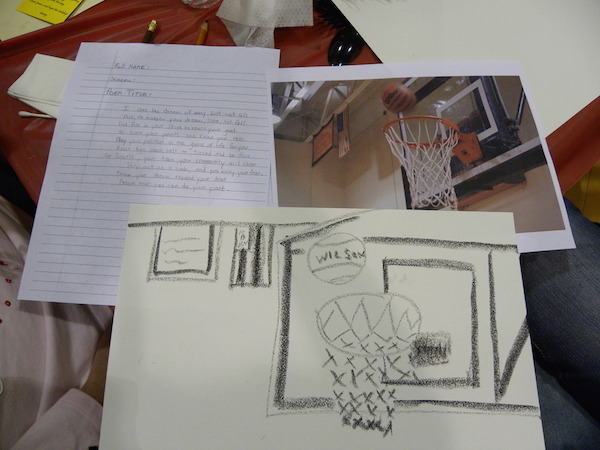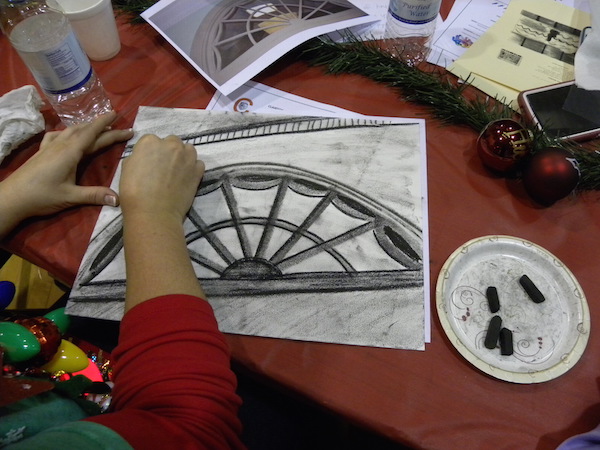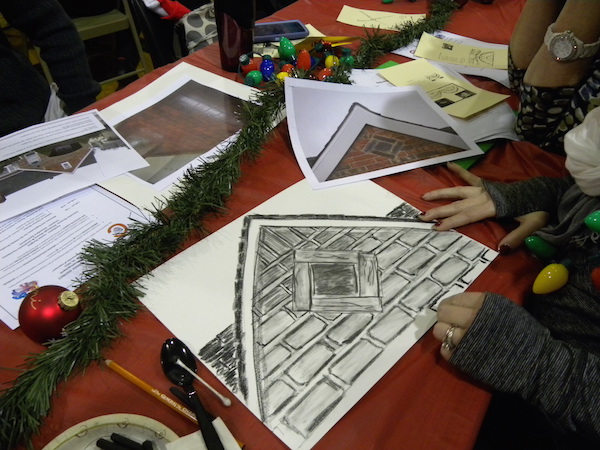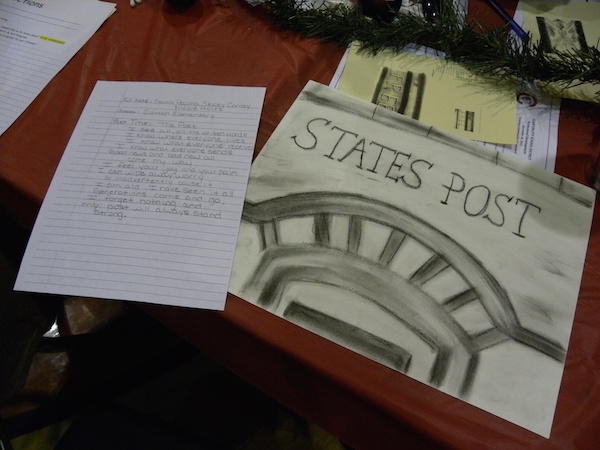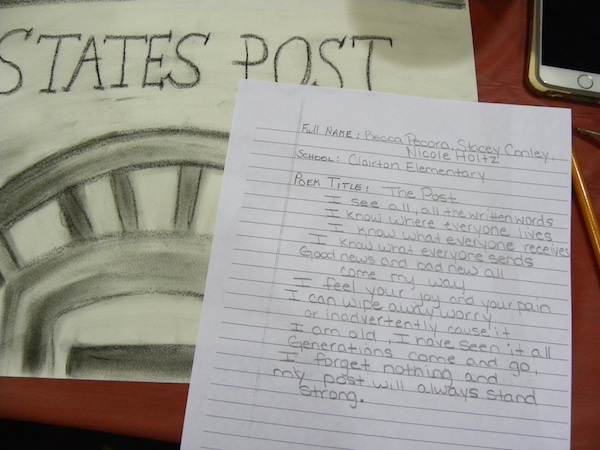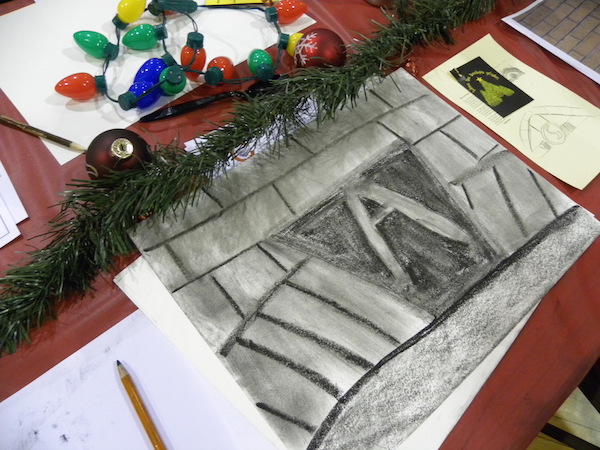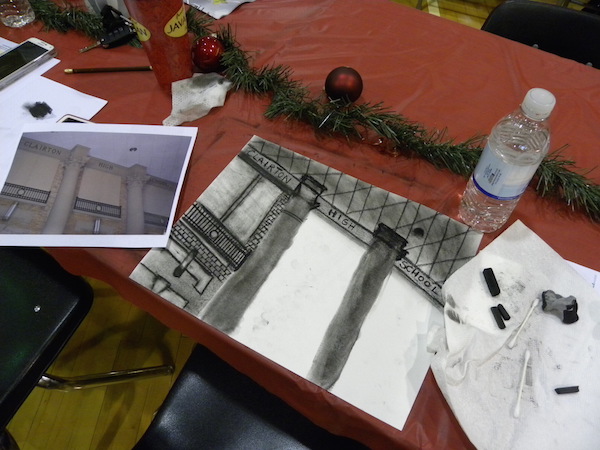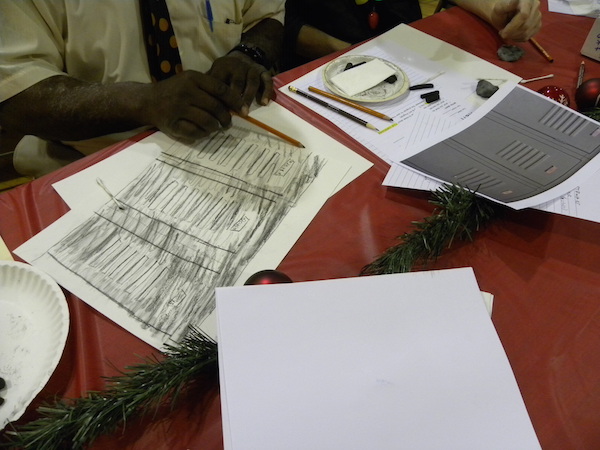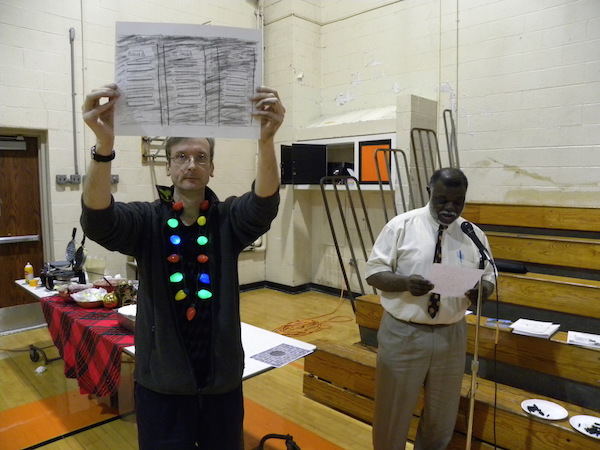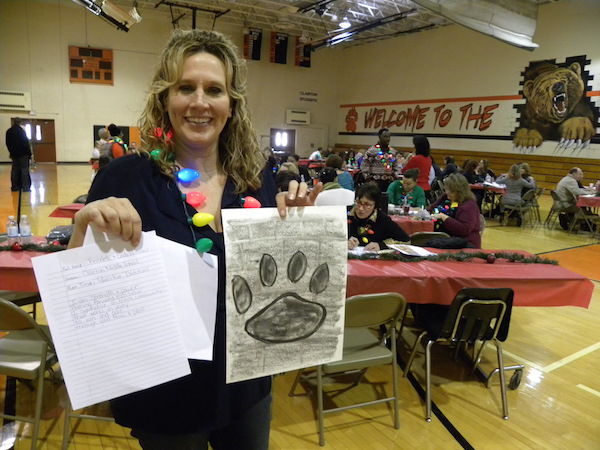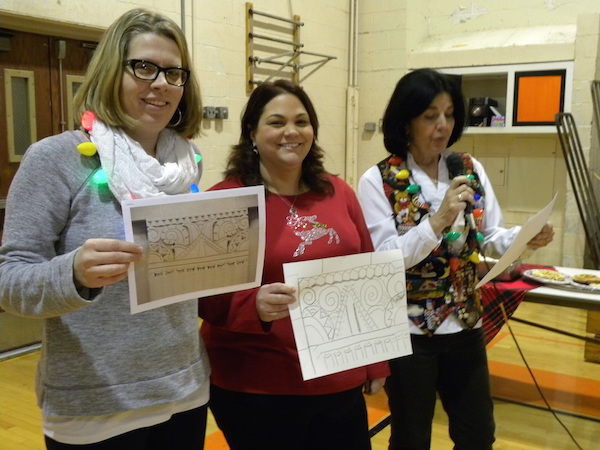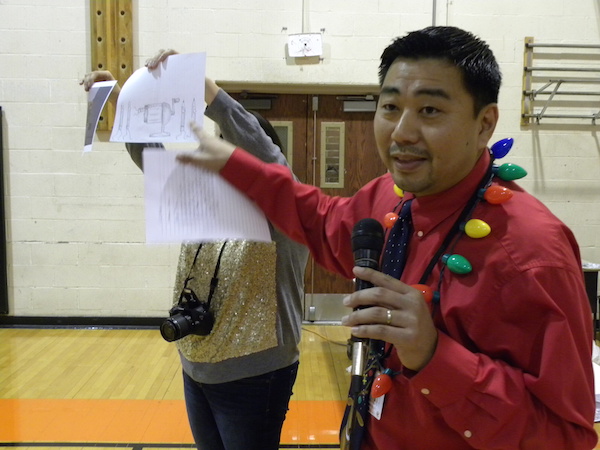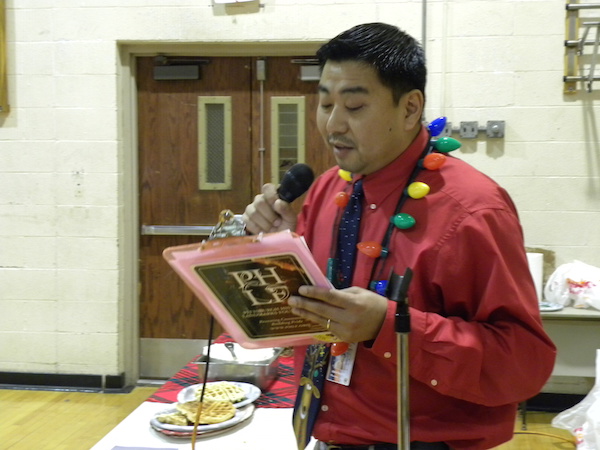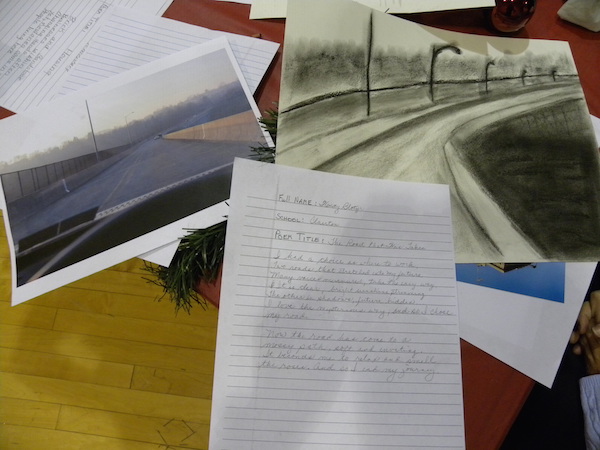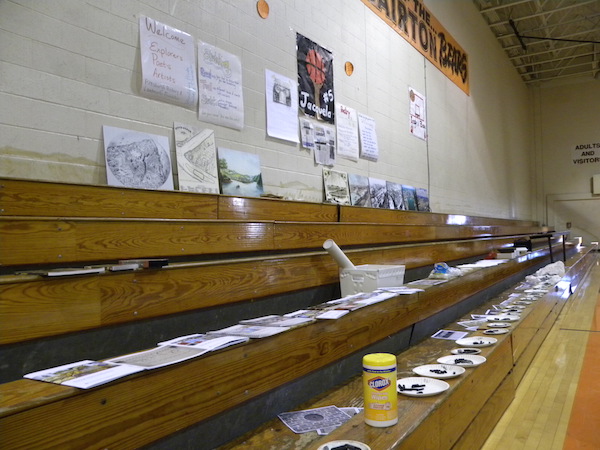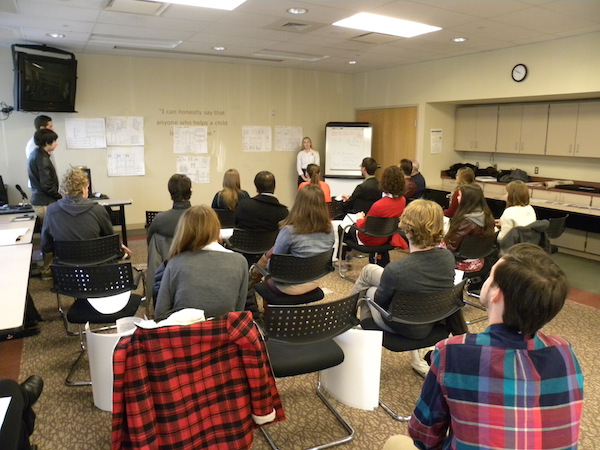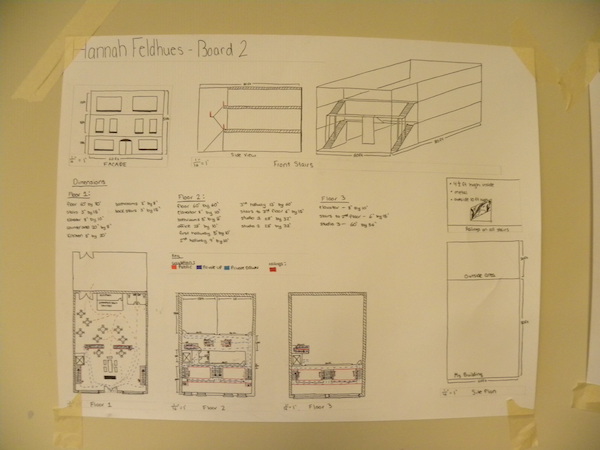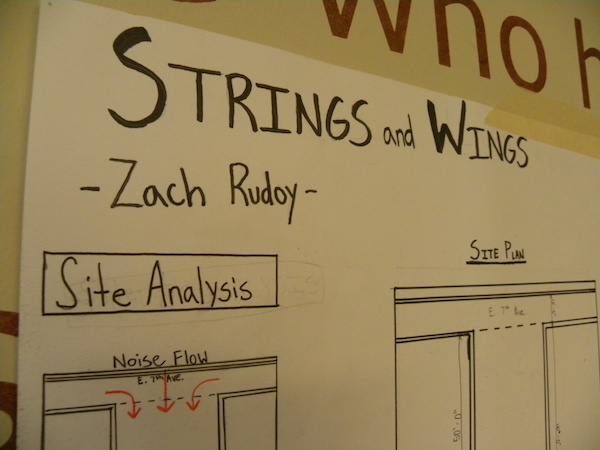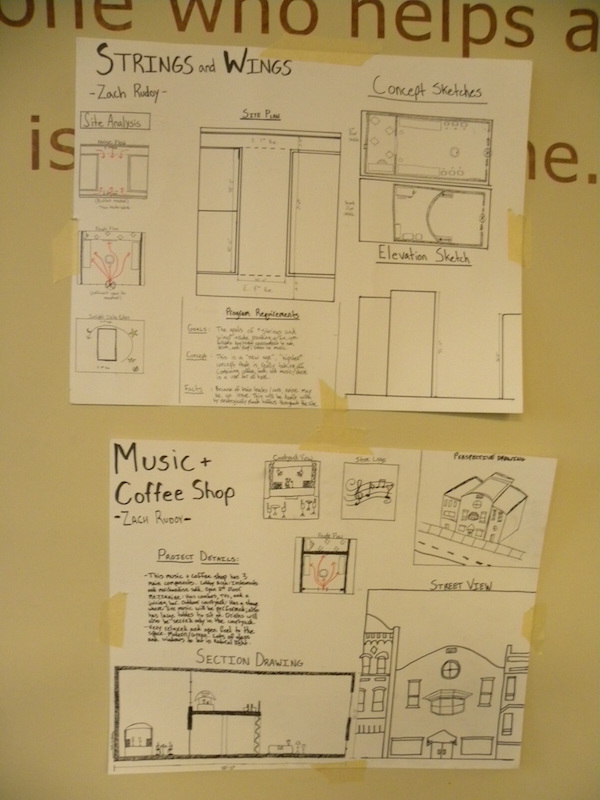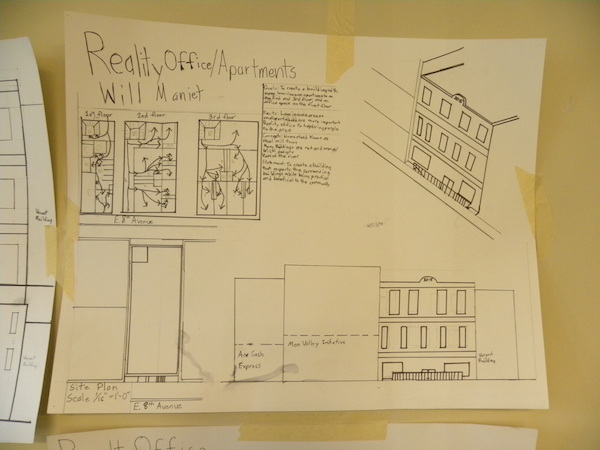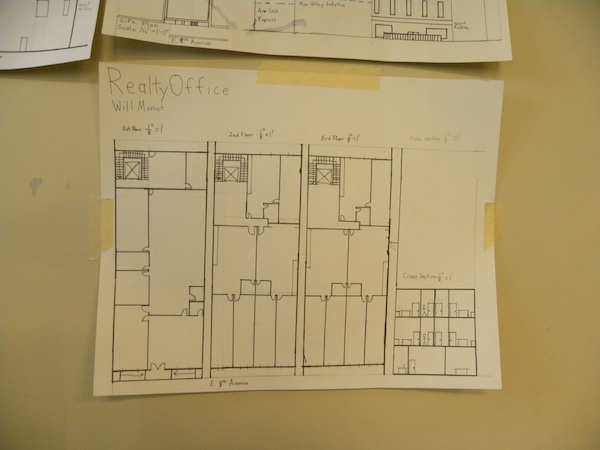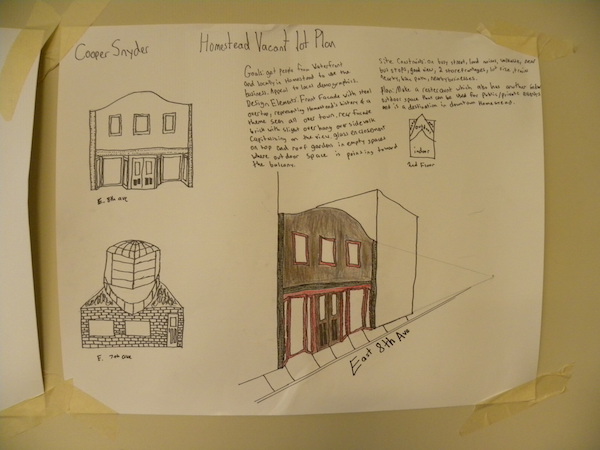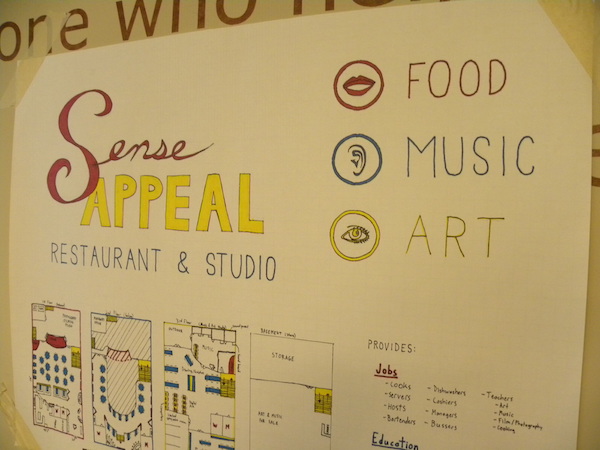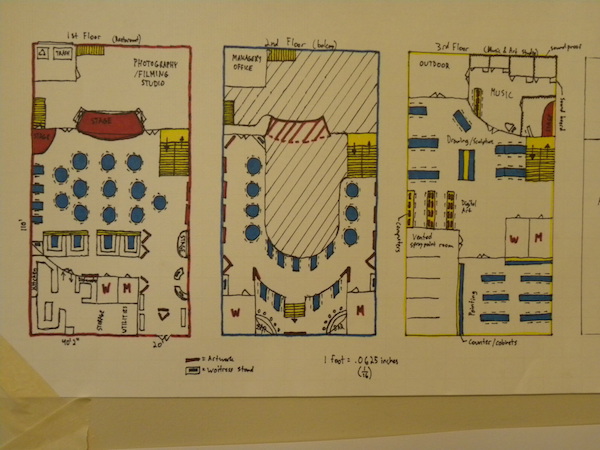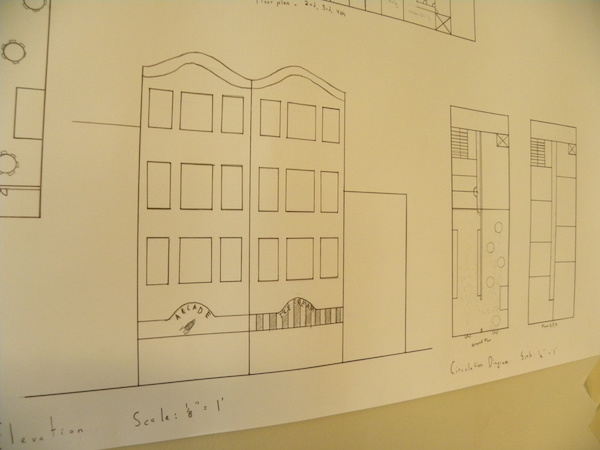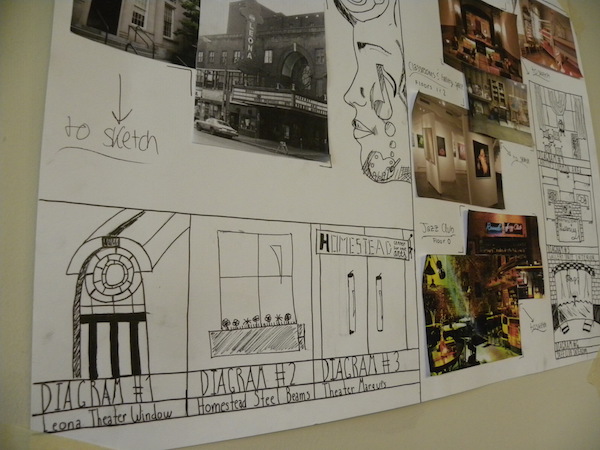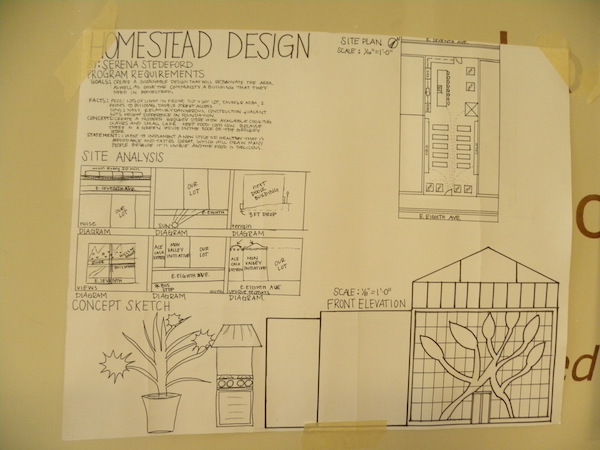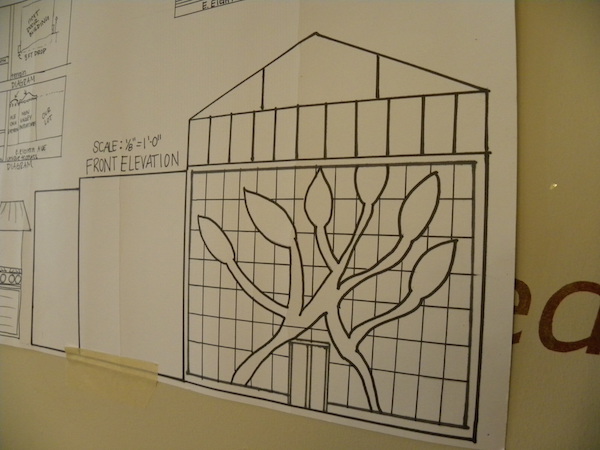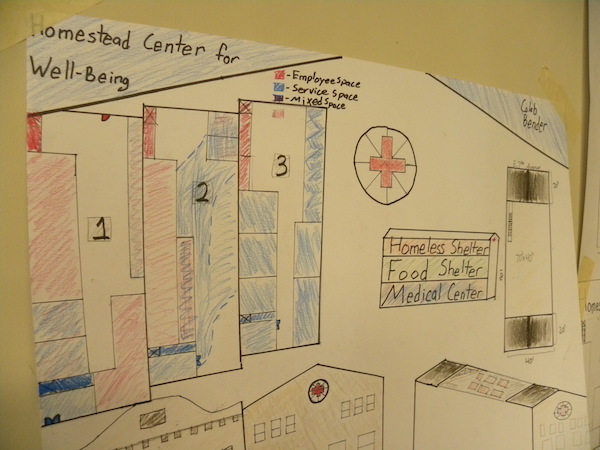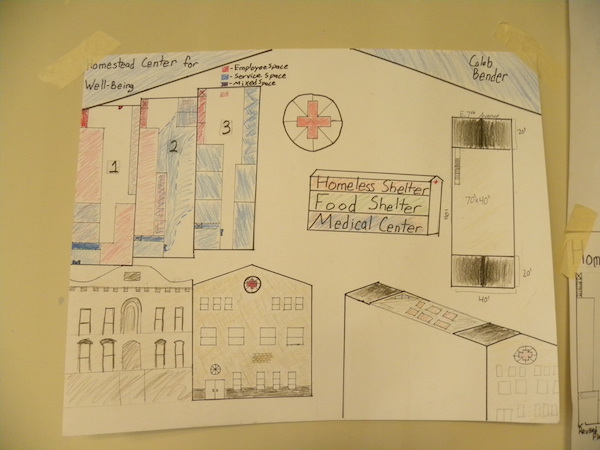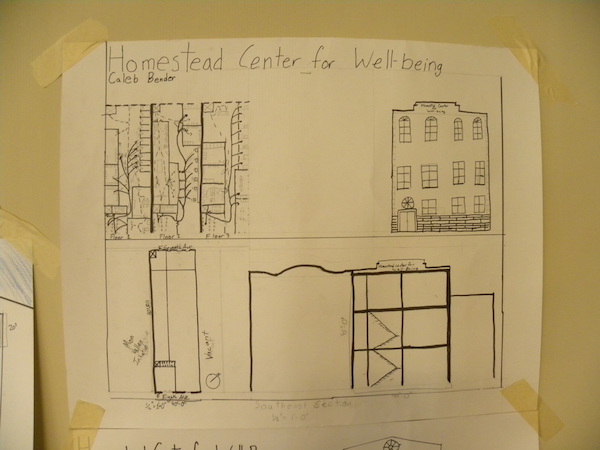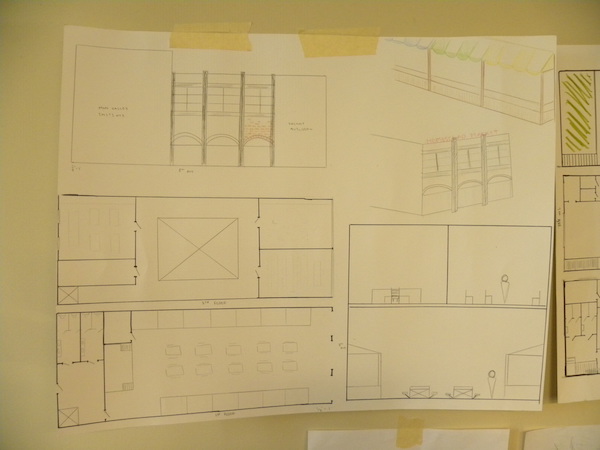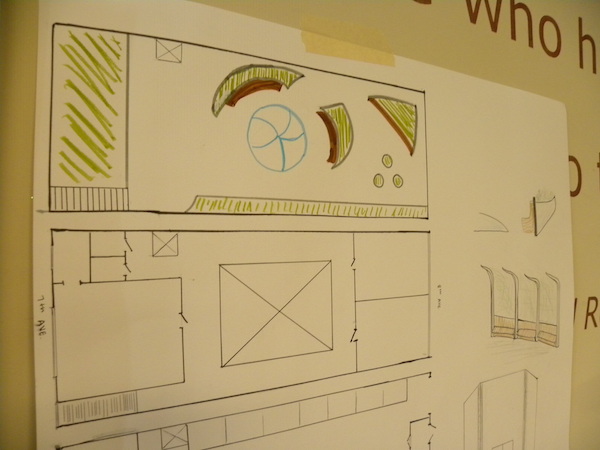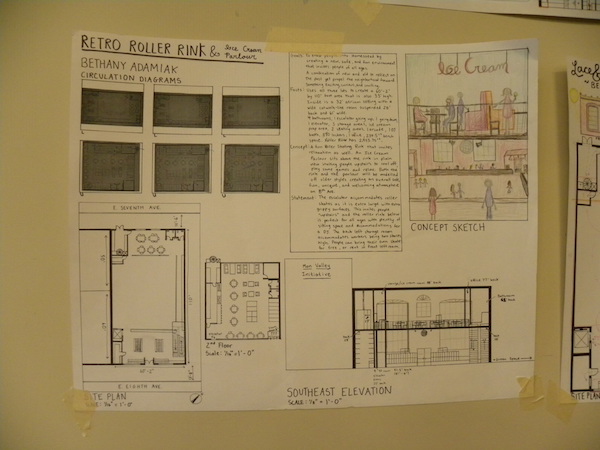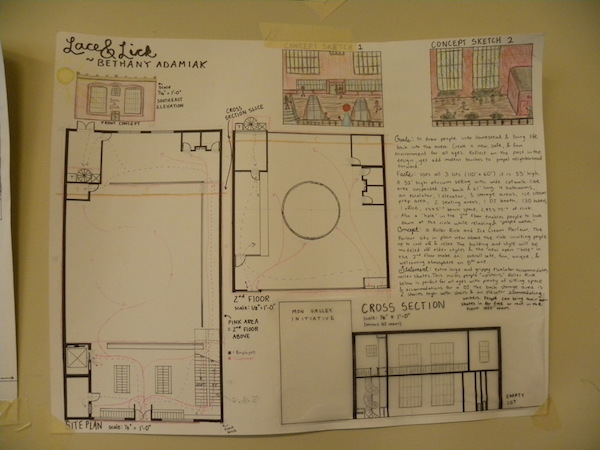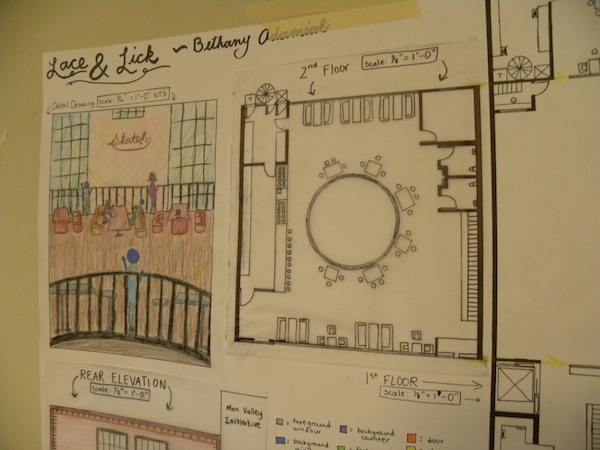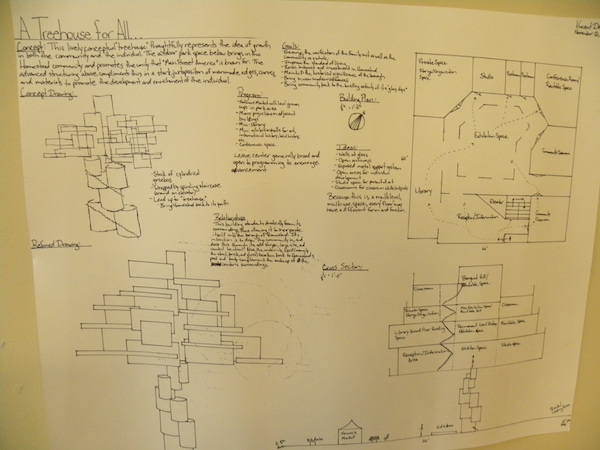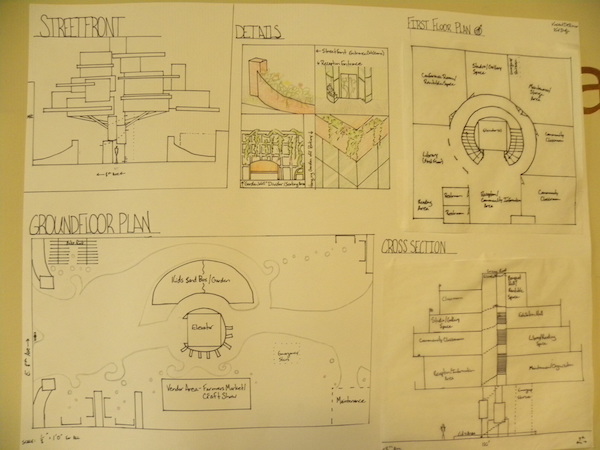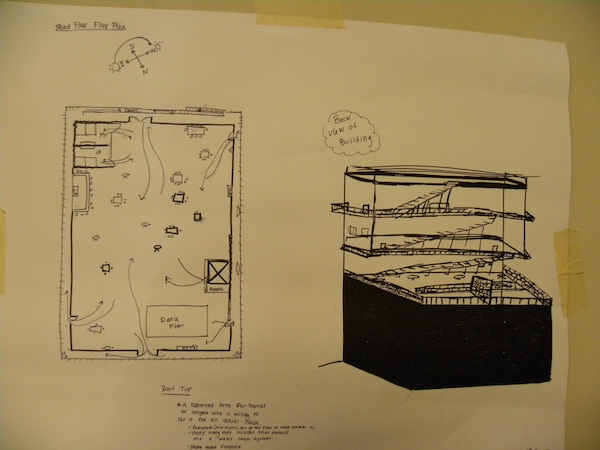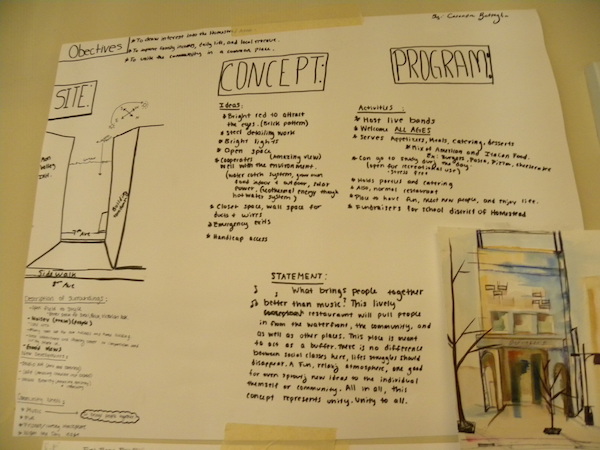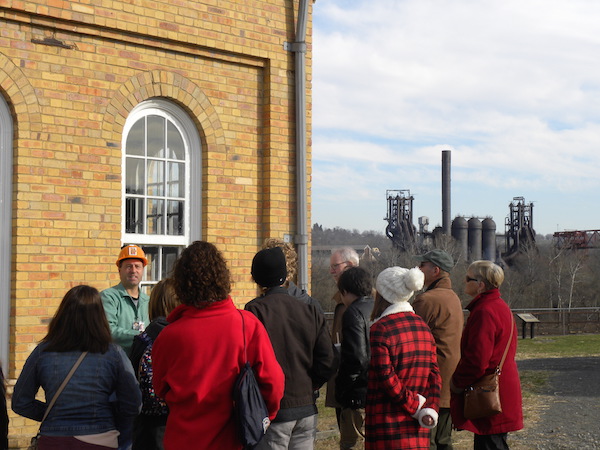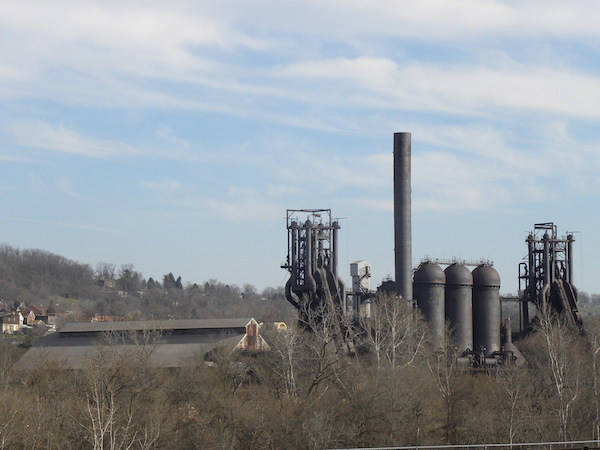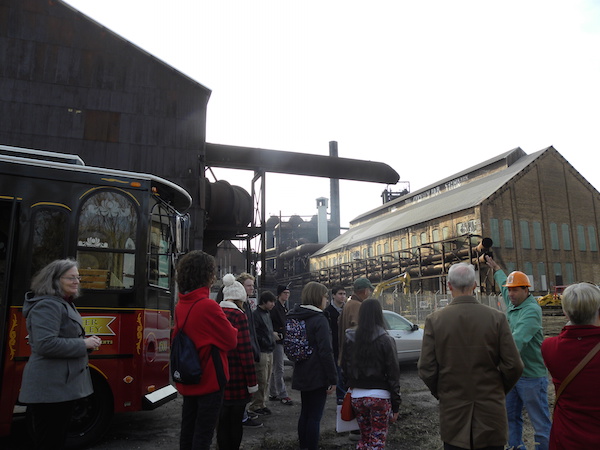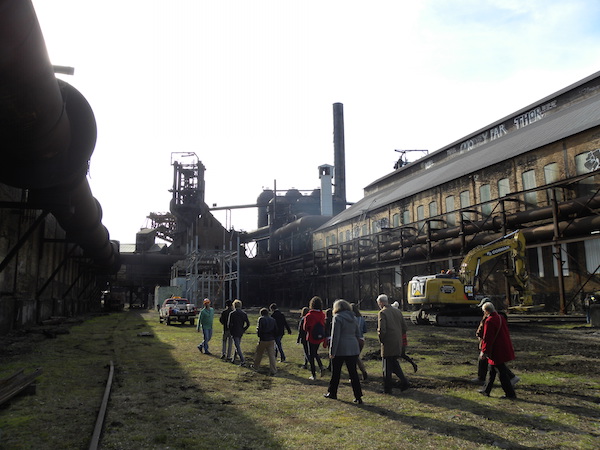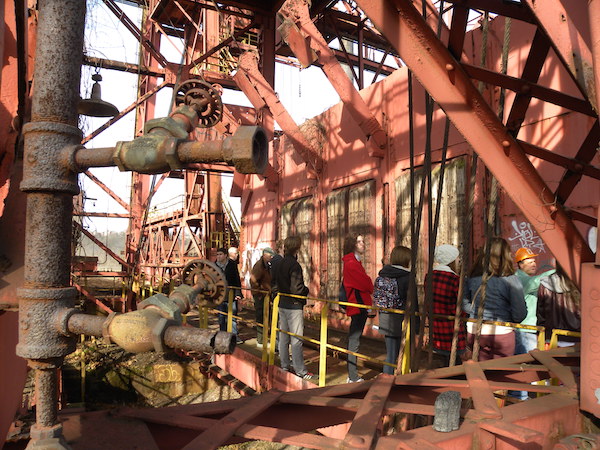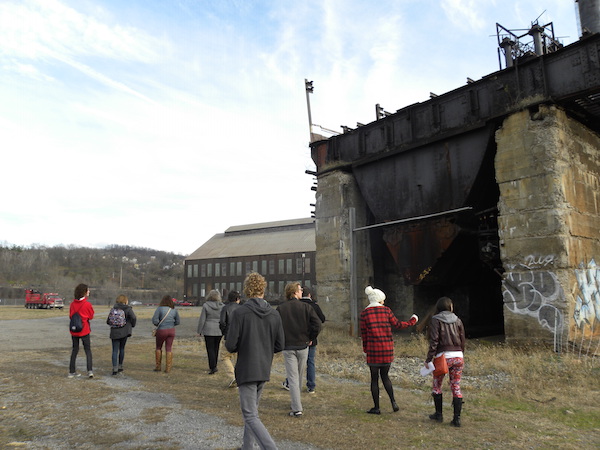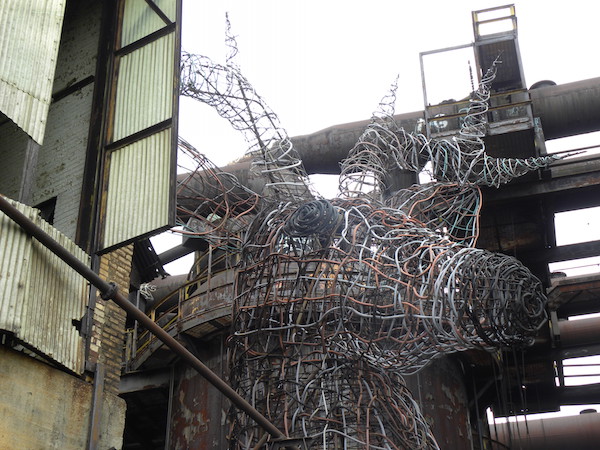
Latest News
-
150 Students Participate in PHLF’s 20th Annual Architectural Design Challenge in Westmoreland County
This marks the 20th year that PHLF has partnered with the Westmoreland County Gifted Coalition to involve middle and high school students in an Architectural Design Challenge. “Each year we create a new design challenge, either in Westmoreland County or in the City of Pittsburgh,” said Education Coordinator Karen Cahall, “and each year students amaze us with the solutions they present and the beautifully crafted models they create.”
Thirty-four teams from 10 schools in Westmoreland County presented their models to a jury of architects on March 30 and 31 at Monessen High School. Their task was to: (1) explore their school and research its history; (2) analyze the pros and cons of their school; and (3) create a scale model showing a new or renovated space that would fulfill an unmet need in the school and strengthen connections with the community.
“What was fascinating about this Design Challenge,” said Executive Director Louise Sturgess, “was how students were able to change the culture of their school through architecture.” In the photo gallery below see the models––and come to PHLF’s library to read the written reports describing the remarkable programs and ideas.
A special thanks to the following people for serving as judges: Samantha Carter, Carnegie Mellon University School of Architecture; Roger Hartung, AIA, IKM Incorporated; Jan Mori, educator; Kelley Stroup, architectural historian; Jessica Stuck, Perfido Weiskopf Wagstaff + Goettel; and Paul Tellers, AIA.
“There are so many valuable skills that all 150 students acquire by participating in PHLF’s Design Challenge,” said Louise. “They become better at managing their time, meeting a deadline, and working in a team to reach a consensus and present a unified vision. We are always impressed with the amount of research students do and with the surveys they conduct to find out what people in the design challenge area think. They improve their math, art, science, writing, and presentation skills as they move through the various phases of the project. PHLF’s design challenge is the ultimate real-world application of so much of what is being taught in the classroom.”
The following middle school teams were awarded prizes on March 30, 2016:
- First Place: Franklin Regional “B”
- Second Place: West Hempfield
- Third Place: Wendover
- Honorable Mention: Yough “B”
- Honorable Mention: Harrold
- Honorable Mention: Franklin Regional “F”
- Student Award (best model according to peers): West Hempfield
- Penguin Award (overcoming a challenge especially well): Yough “D”
The following middle school teams were awarded prizes on March 31, 2016:
- First Place: Penn “D”
- Second Place: Monessen
- Third Place: Penn “C”
- Honorable Mention: Trafford “A”
- Honorable Mention: Trafford “D”
- Honorable Mention: Greensburg Salem “A”
- Student Award (best model according to peers): Trafford “A”
- Penguin Award (overcoming a challenge especially well): Penn “B”
The following high school teams were awarded prizes on March 31, 2016:
- First Place: Southmoreland
- Second Place: Yough
- Third Place: Penn Trafford
- Honorable Mention: Mount Pleasant
- Honorable Mention: Derry Area
- Student Award (best model according to peers): Penn Trafford
- Penguin Award (overcoming a challenge especially well): Monessen
A special thanks to Cinda Maxwell of Monessen High School for hosting the March 30 and 31 Design Challenge, and for all her efforts in coordinating PHLF’s program with the Westmoreland County Gifted Coalition. Thanks, too, to all the teachers who provided encouragement, guidance, and expertise to the students from October through March as they solved the 2015-16 Design Challenge.
-
More Corporations Donate to PHLF-PPS Program
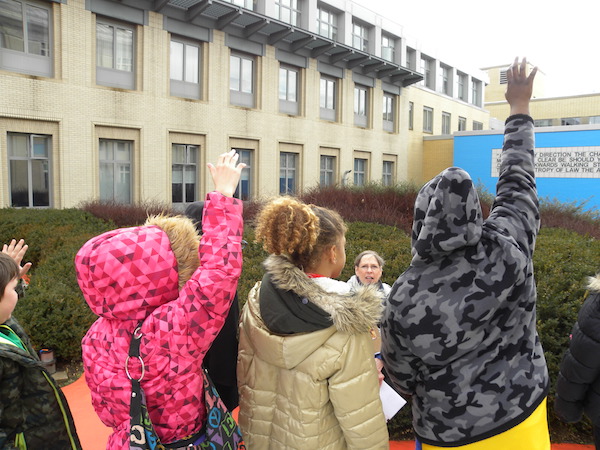
Fifth-grade students from Pittsburgh Beechwood were explorers, poets, and artists at Carnegie Mellon University during PHLF’s “Building Pride/Building Character” Poetry and Art workshop on February 24.
PHLF is a great asset to our community. The education staff, docents, and interns truly care about our city and their enthusiasm is passed on to the children of Pittsburgh. This helps the children build pride in their community and helps them develop their character in a positive sense. ––Pittsburgh Public School teacher
PNC Bank, Eat’n Park Hospitality Group, Inc., and Maher Duessel, CPA have joined First National Bank of Pennsylvania, Huntington Bank, and Frank B. Fuhrer Wholesale Company in contributing to PHLF through the state’s Educational Improvement Tax Credit Program. These corporations, along with funding from the McSwigan Family Foundation and Alfred M. Oppenheimer Memorial Fund of The Pittsburgh Foundation, are helping to underwrite PHLF’s “Building Pride/Building Character” program of field trips and educational programs for 14 Pittsburgh Public Schools. We are grateful to all our donors.
PHLF staff and docents presented “Portable Pittsburgh” and “People Who Work to Improve Our Communities” to Pittsburgh Banksville, Colfax, Concord, Greenfield, Phillips, and Westwood in February, and Pittsburgh Beechwood participated in PHLF’s Poetry and Art program at Carnegie Mellon University. In March, PHLF”s “Building Pride/Building Character” program will continue with more tours of Carnegie Mellon University and downtown Pittsburgh for various Pittsburgh Public Schools.
In the gallery below, view photos from PHLF’s recent Career Awareness and Poetry and Art programs.
-
The Personal Papers of James D. Van Trump
The strongest impression I got about Jamie as a Pittsburgh figure was from the letters and cards he received during his time in the hospital after his accident in 1978. He received over two hundred cards from people he had never met, who knew him from his appearances on the Al Julius KDKA television program and from his public appearances at various events. I even saw a letter referring to him as “Mr. Pittsburgh,” in reference to his knowledge of local history and architecture. ––Emily Dahlin, Duquesne University intern archivist
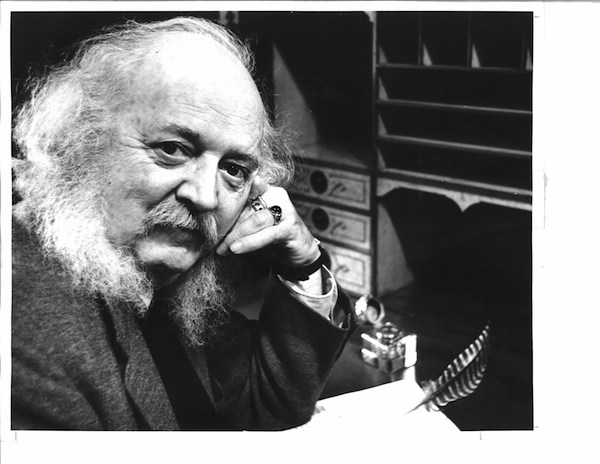
PHLF Co-founder James D. Van Trump
Thanks to the dedication and expertise of Duquesne University graduate student Emily Dahlin, various personal correspondence, memoranda, and miscellaneous ephemera have been added to PHLF’s James Van Trump Collection. Jamie Van Trump (1908 – 1995) co-founded PHLF in 1964 and served as its first architectural historian. The materials that Emily organized date from 1948 to 1991, with the bulk of them being from 1970 to 1991.
Emily Dahlin’s description of her experience in organizing Jamie’s personal correspondence follows:
“As part of Duquesne University’s Public History program, I completed an archival internship at PHLF from the fall of 2015 through mid-January 2016, working on the personal correspondence of Co-founder James Van Trump. I was drawn to interning at PHLF because I am interested in architecture and historic preservation, and I had hoped to work with archival materials relating to Pittsburgh architecture and prior PHLF preservation projects. My primary goal in completing this internship was to be able to work on an archival project at its earliest stages and see it to completion. I had never had the challenge of working on an unprocessed collection from the beginning of the process, and I was eager for the opportunity to process the Van Trump collection.
“The correspondence and personal papers were housed in five large boxes and were, I soon found out, completely unorganized and unprocessed. The correspondence ranged in date from 1941 to 1991, and had sat untouched in a storage unit until very recently. The boxes contained a wide variety of items, including letters and memoranda, greeting cards, postcards, legal documents, photographs, newspaper clippings, and various ephemera. This task required that I read every individual piece of correspondence, which was the main reason why the project was so time-consuming. After several weeks, I was able to select over two hundred pieces of correspondence for preservation by PHLF, and recommended several other documents for donations to other institutions, most notably a collection of material related to the Second World War, which PHLF has donated to the Soldiers and Sailors Memorial in Oakland.
“On a few occasion during my internship, I was asked to assist with educational walking tours for elementary and high school students, and for adults. I found these experiences to be valuable, as they allowed me to experience how PHLF works with the community and acts as a public voice for history and preservation. I learned a lot from my experience on the education tours about how community outreach works and the different ways in which history and architecture can be incorporated into a number of different programs and school lessons. Overall, I feel that my experiences at PHLF had a very positive impact on my understanding of the public history field, and I am grateful to have had the experience.”
-
In Memoriam: Jonathon Hulton Bridge
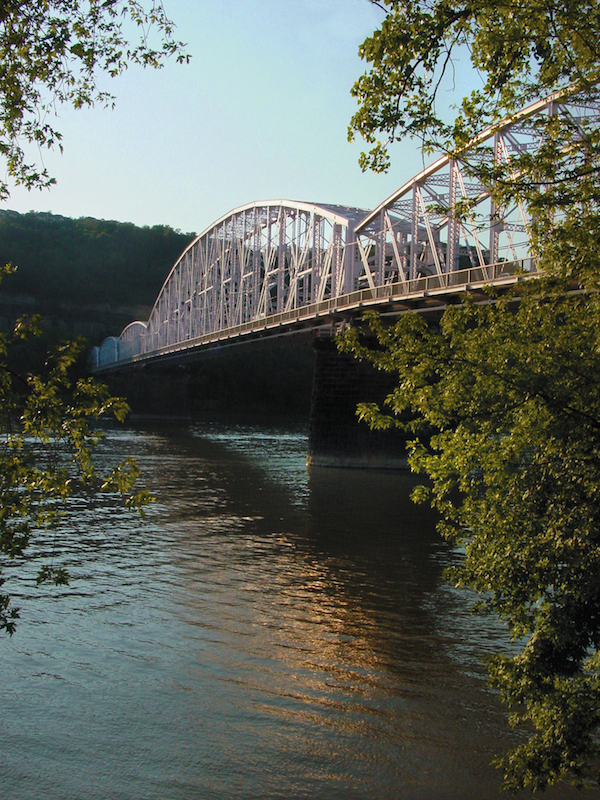
Hulton Bridge over the Allegheny River. Photo by Greg Pytlik, Pytlik Design Associates
The Jonathon Hulton Bridge over the Allegheny River between Oakmont Borough and Harmar Township was demolished on Tuesday, January 26. Until its closure, the landmark Hulton Bridge was the oldest active vehicular bridge over the entire length of the Allegheny River.
Constructed in 1908-09, the Hulton Bridge was technologically innovative. The bridge had a total length of 1,544 feet and a main span of 505 feet, one of the fiftieth longest simple truss spans in North America. Its Pennsylvania truss type was first developed by the Pennsylvania Railroad as a modification of the smaller Parker truss to be capable of spanning longer distances. The Hulton Bridge’s approach spans were shorter Parker trusses, each approximately 260 feet in length.
Serving as the link between Oakmont and Plum and Route 28 and the Pennsylvania Turnpike on the opposite side of the Allegheny River, the bridge was a frequent traffic bottleneck, necessitating its replacement by the new four-lane steel girder bridge. In 2009, students at Carnegie Mellon University studied retaining the bridge for pedestrian use, but doing so would have conflicted with the replacement bridge.
The Allegheny County Roads Department was formed in 1895, and it became the Allegheny County Department of Public Works in 1924. The department started rather small, and its first bridges were short spans over small streams. For example, an early County stone arch still stands near the Hulton Bridge at the intersection of Freeport Road and Powers Run Road, though it has been bypassed. As development spread beyond Pittsburgh and as automobiles became important, County government became involved in designing and owning roads and major bridges. Previously, privately owned companies had designed and owned major roads and bridges and had operated them as toll facilities.
The Hulton Bridge was Allegheny County Department of Public Works’ first river crossing. The Public Works Department kept growing, and was soon responsible for just about every major river bridge in Pittsburgh. It was not until the late 1950s that the Pennsylvania Department of Highways began to construct river bridges in the area. Later, the State began to take ownership of several of the former County bridges, including the Hulton Bridge.
The unique truss bridge had a majestic appearance, and it will be missed. Days before demolition, many Oakmont residents––and bridge admirers from elsewhere––were walking through the snow to take final photos of the memorable Hulton Bridge. The last four photos show the bridge on January 31, 2016, several days after demolition.
-
Landmarks Preservation Resource Center Events
 We resume our programming at the Landmarks Preservation Resource Center—744 Rebecca Avenue, Wilkinsburg, PA 15221—with the first of a six-part demonstration workshop by Regis Will, a woodworker and master craftsman, who specializes in house carpentry and wood restoration.
We resume our programming at the Landmarks Preservation Resource Center—744 Rebecca Avenue, Wilkinsburg, PA 15221—with the first of a six-part demonstration workshop by Regis Will, a woodworker and master craftsman, who specializes in house carpentry and wood restoration.This year, Regis will offer six classes—one, every other month—touching on varying aspects of woodworking. His hands-on workshops will now take a three-hour window in order for him to focus and apply his teaching skills on specific details of the craft. His first workshop on Saturday, January 16, 10:00a.m.—1:00p.m., will be an introduction to woodworking hand tools. Other workshops will include sessions on sharpening edge tools; saws and the skill of sawing; planes, flattening and squaring wood, and a comprehensive session on creating basic joints.
 Also in January, we will continue our screening of documentaries on architecture, history, public policy and planning of cities, with a two-part documentary on the architectural history of Paris, on Tuesday, January 19, 6:00p.m.—7:30p.m., and Thursday, January, 21, 6:00p.m.—7:30p.m.
Also in January, we will continue our screening of documentaries on architecture, history, public policy and planning of cities, with a two-part documentary on the architectural history of Paris, on Tuesday, January 19, 6:00p.m.—7:30p.m., and Thursday, January, 21, 6:00p.m.—7:30p.m.Join us for these and other lectures, workshops, seminars and community symposia, as we continue growing our programming at the Landmarks Preservation Resource Center (LPRC). Take a look at our events calendar at www.phlf.org to see upcoming LPRC and other educational events including city and neighborhood walking tours and special events in 2016.
All programming at the LPRC is FREE to PHLF members.
Non-members: $5
Click here to renew your membership or Join now! RSVPs appreciated to all events to Mary Lu Denny: Marylu@phlf.org or 412-471-5808 ext. 527
For more information or to suggest a potential topic/idea for presentation at the LPRC, please contact, Karamagi Rujumba: Karamagi@phlf.org or 412-471-5808 ext. 547.
-
Thank You, Interns
Max Adzema, who graduated from the University of Pittsburgh in December 2015, and Emily Dahlin, a student in Duquesne University’s Public History program, successfully completed volunteer internships with PHLF in the Fall of 2015.
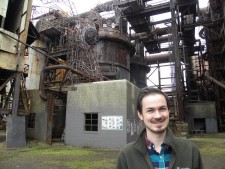
Max Adzema
“We are grateful to Max and Emily for helping with tours, various research projects, and several Poetry and Art workshops and publications,” said PHLF Executive Director Louise Sturgess. “In addition, Max provided invaluable help in editing the second edition of the August Wilson guidebook, and Emily sorted through and organized the personal papers of James D. Van Trump, PHLF’s co-founder.”
Each intern commented on their experiences with PHLF:
“As someone who loves Pittsburgh this internship has been an incredibly rewarding experience, opening the door to further opportunities and interests in local history and architecture. I have been continually surprised by the passion, drive, love, knowledge, and dedication that PHLF staff members have shown while pursuing the goals of building pride in and preserving our beautiful city. Thanks for the many wonderful experiences!” ––Max Adzema, University of Pittsburgh (History of Art & Architecture/Museum Studies)
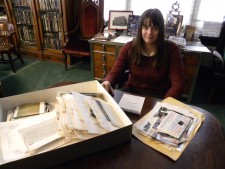
Emily Dahlin
“Overall, I found my internship at PHLF to be an educational, challenging, and valuable one. Through my archival projects and my observations of educational programming, I have learned much about the city of Pittsburgh, historical architecture, and archival work. I feel that fulfilling this internship had a very positive impact on my ability to perform as an archivist and has done much to further my educational and professional goals.” ––Emily Dahlin, Duquesne University (Public History)
-
Contrasts in Clairton: Education Versus Demolition
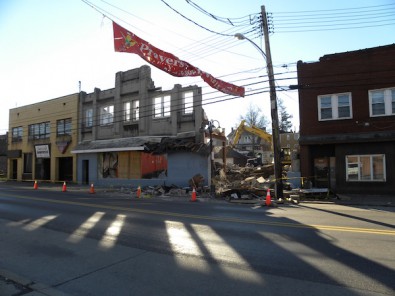
A long-vacant commercial building on St. Clair Avenue in Clairton was demolished in December 2015.
On the morning of December 16, 2015 two noteworthy events were occurring simultaneously in Clairton: PHLF Executive Director Louise Sturgess was involving 100 teachers from the Clairton School District in a Poetry and Art workshop at Clairton Middle/High School on Waddell Avenue. In the gallery below, see photos from that inspiring event. Just a block away, a historic building on St. Clair Avenue was being demolished.
“When I left the school I was startled to see this contrast,” said Louise. Inside the school, teachers from all grade levels were sketching architectural details from their school or community landmarks and were composing poems about those details that made you care about the buildings. Outside, the stone façade of a long-vacant commercial building on one of Clairton’s main streets was being knocked down.”
A major article in the Pittsburgh Post-Gazette in November 2015 described the community development challenges facing Clairton. PHLF’s survey of 1980 identified more than 50 significant architectural landmarks in Clairton that could provide the foundation for economic renewal.
-
Apprentices Present Vacant Lot Designs
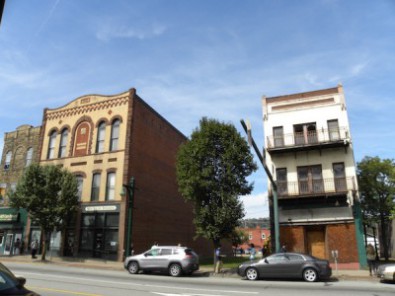
A vacant lot in Homestead was the site of a real-world design challenge for high school apprentices in architecture.
“I got to go through the architectural process in a practical, real-world scenario. I got to view historic architecture and learn about the value of preserving it.”
“It helped me understand the life and schooling of an architect. It helped me decide if this is something I would want to do with my life.”
“This program taught me everything I know so far about architecture. It taught me so much I now feel confident combining it with my mathematical and artistic skills to start my career path in college this upcoming year.” ––Comments from Apprentices, Fall 2015
PHLF’s longest-running education program is the Architecture Apprenticeship, offered through the Allegheny Intermediate Unit. High school students who are interested in architecture, urban planning, and historic preservation may apply to the Allegheny Intermediate Unit (AIU) and are selected to participate in five, full-day sessions that PHLF plans and leads, September through December.
This year, educator Samantha Carter from CMU’s School of Architecture and architect Paul Tellers assisted PHLF’s Louise Sturgess in teaching the program. “The students were introduced to the design process,” said Paul, “and were able to tour Homestead, CMU, and downtown Pittsburgh, where they visited Urban Design Associates.”
The apprentices developed their design ideas for a vacant lot at 307-09 East Eighth Avenue in Homestead with guidance from CMU’s School of Architecture and professional architects. On December 9, they presented their ideas to a jury of professionals including Borough Manager Ian McMeans, Mon Valley Initiative Representative Stephanie Eson, and architect Raymond Bowman.
Ideas included a dance studio and cafe; music and coffee shop (“Strings & Wings”); realty office and apartments; a restaurant and event space; a building devoted to food, music, and art; an arcade and ice-cream parlor with mixed-income apartments; a community center for the arts; a grocery store with a rooftop greenhouse; a medical center, food shelter, and homeless shelter; an indoor market with a rooftop garden; a roller skating rink and ice cream parlor; a community learning center, including library, studio, and gallery spaces; and a restaurant and entertainment venue.
“The students invested a great deal of thought and effort in developing their design ideas,” said Louise Sturgess. “Any one of the concepts would be wonderful to develop and would benefit the Homestead community.”
See the various design ideas the students presented in the photo gallery below.

